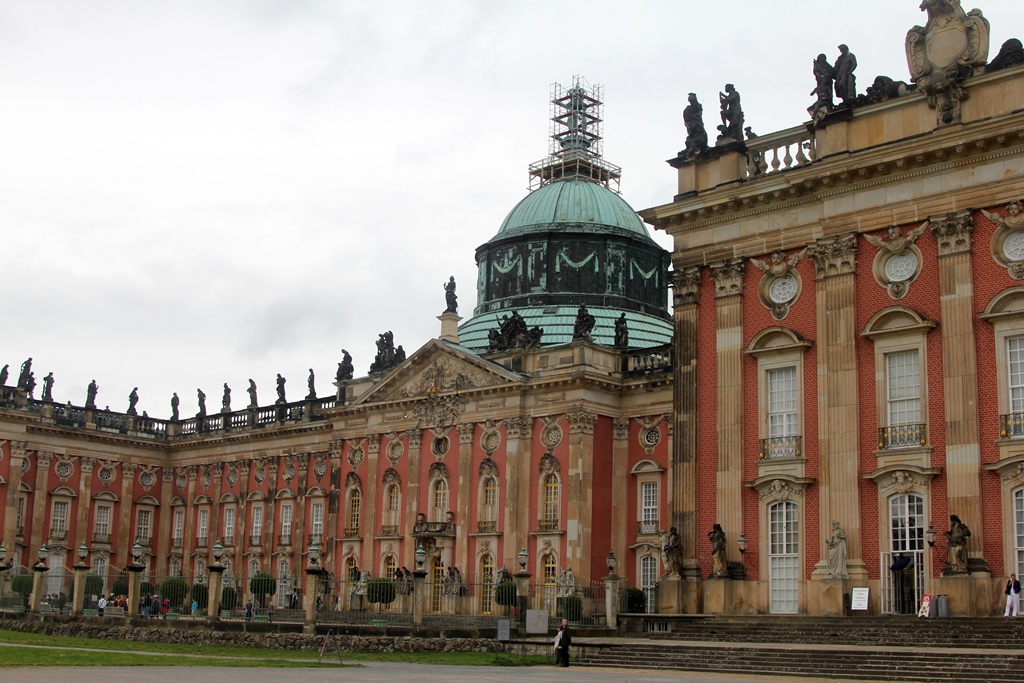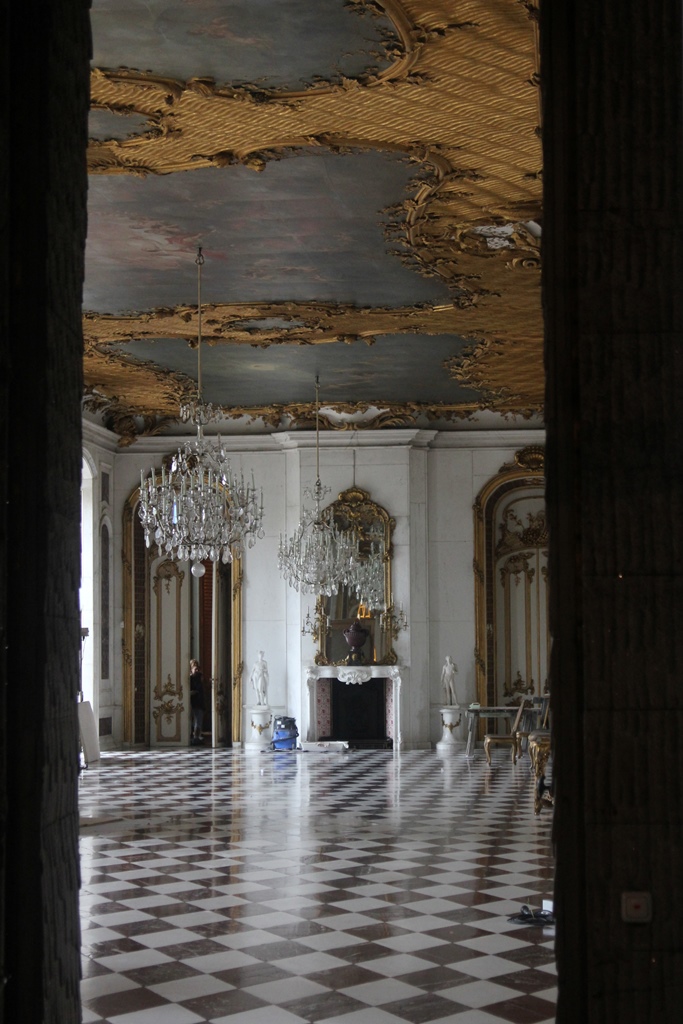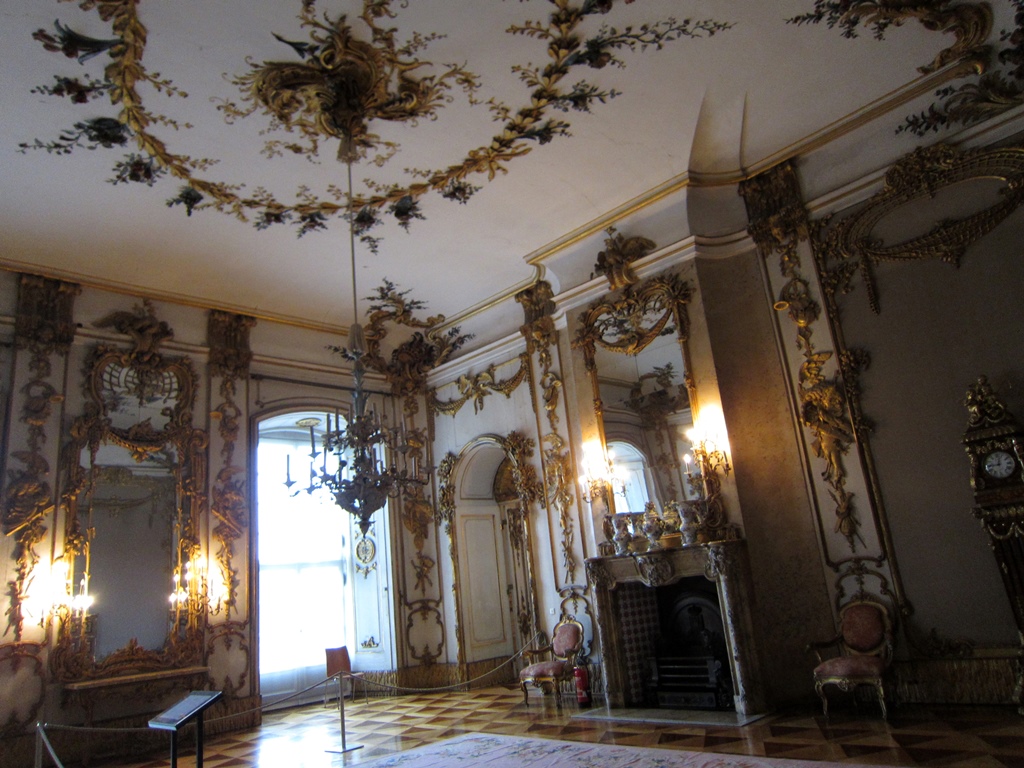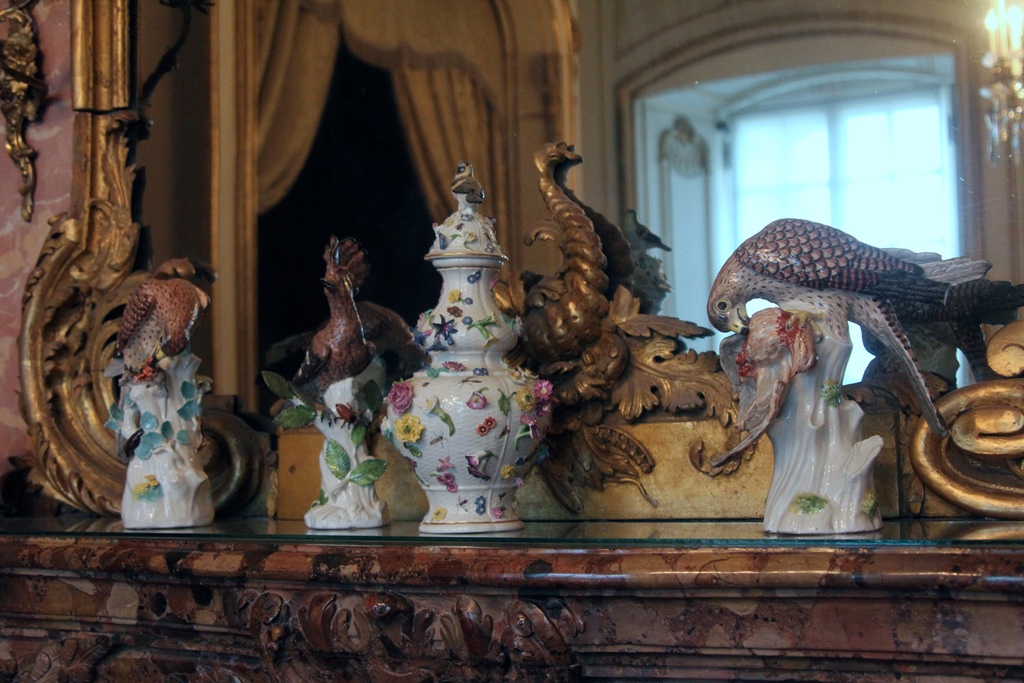Neues Palais
The name by which Frederick the Great’s second palace, the Neues Palais (New Palace),
is referred to in Germany could be seen as being indicative of Frederick’s linguistic
preferences. Though Frederick was undeniably German, he never really cared for the German
language, much preferring to speak French (this was actually quite common among the
European nobility of the time). He was also partial to other things French, such as art
and philosophers, and this may have led him, despite the growing trend toward
neoclassical architecture, to build one of the last great baroque palaces in
Europe. But the fact that he built a palace at all was apparently a response to the
Seven Years' War.
The Seven Years’ War lasted from 1754 to 1763 (apparently the name "Nine Years' War" was
already taken), and can be looked at as an early World War, as it involved most of the
major powers of Europe and took place in numerous theaters, scattered across the
globe. Besides Europe, fighting was seen in North America (this is known in the U.S. as
the French and Indian War), South America, Africa, India and even the Philippines. In
Europe, the war was essentially Prussia, Great Britain and some of the smaller German
states vs. Everybody Else. Prussia was facing Sweden from the north, Russia from the
east, Austria from the south and France from the west. Britain was a valuable ally, as
they supplied money, a certain amount of land forces, and the most dominant navy in the
world. But even so, Frederick’s strategic and tactical skills were tested to their
limits and beyond, and the war would probably have been lost if it hadn’t been for the
"Miracle of the House of Brandenburg", which happened in early 1762. In this Miracle the
Russian Empress Elizabeth died, and her successor, Peter III, immediately switched sides
to ally with Prussia and Great Britain. This was a great boost for Prussia, whose
manpower had dwindled to a dangerous level, and a profound reversal for Prussia’s foes,
who quickly lost their appetite for further conflict. As it turned out, Peter III didn’t
last long, being overthrown and assassinated by mid-1762, and his successor, Catherine
the Great, lost no time in switching sides back again. But by this time it was too
late – the war was winding down, and a treaty was signed in early 1763, ending it.
Prussia emerged from the war, battered and financially drained, but without loss of
territory. This was a moral victory, as Austria’s principal aim had been to retake
Silesia from Prussia, but Frederick felt that the Prussian people needed additional
measures to lift their mood after such a costly conflict. What better way could there
be than to build a new palace? So the Neues Palais was built, from 1763 through 1769.
In contrast to Sanssouci, which was quite small for a palace, the Neues Palais was
gigantic, with three stories and more than 200 rooms. Frederick didn’t really like
staying there, preferring the relative intimacy of Sanssouci. But the Neues Palais
had large rooms that were more suited to events of state, and of course had much more
space for visitors.
Such as us. Our bus from Sanssouci passed to the north of the Neues Palais area,
then looped around to the south, where it dropped us off just south of the palace.
On the way we saw several buildings belonging to Potsdam University - some of the
buildings of the Neues Palais complex are now in use by this school.
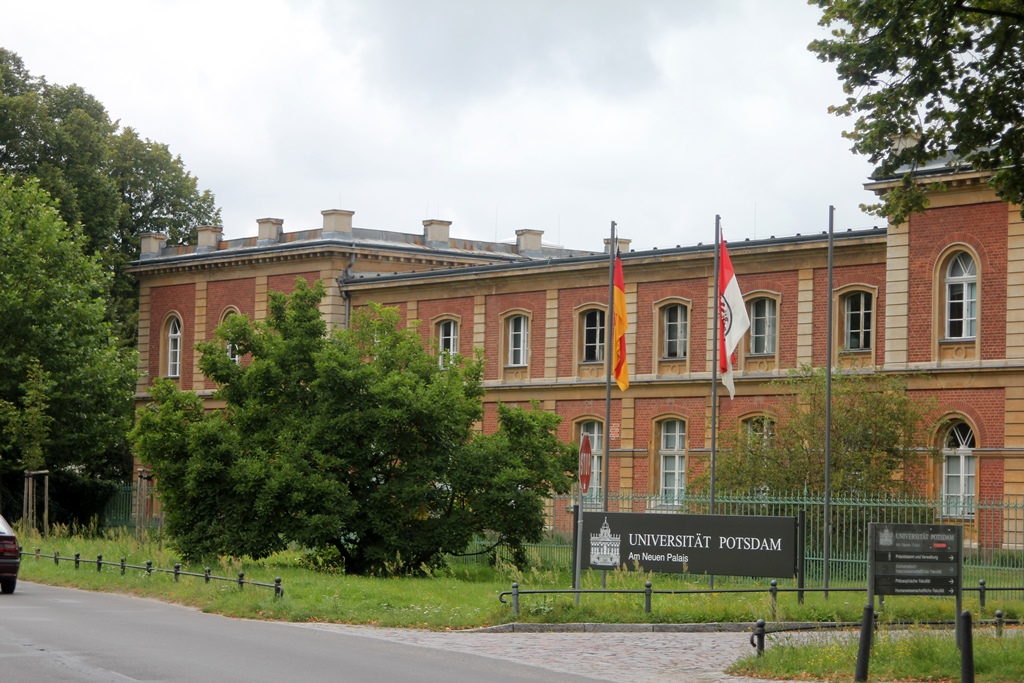
A Potsdam University Building
Approaching the palace from the south, we could see two large, matching buildings
on the left, known as the Communs, which are used by the university. In
Frederick’s day, they were used to house the kitchen staff and the servants. We
noted they were undergoing renovation, and there was a great deal of scaffolding
between them. A makeshift shelter was protecting a number of statues which had
temporarily been taken down from a structure that connects the two buildings.
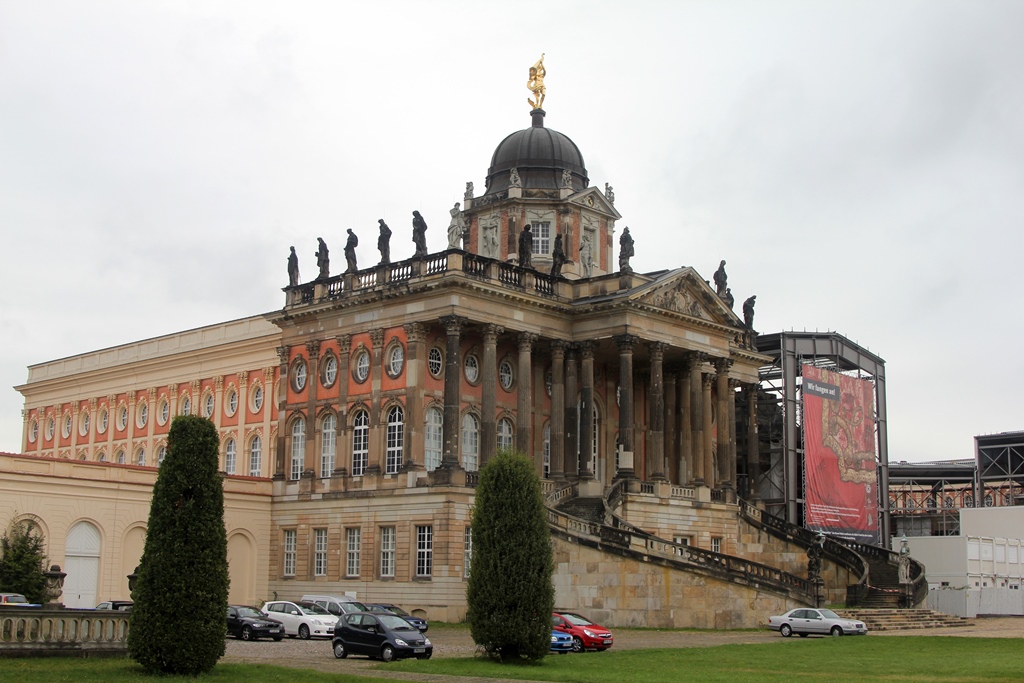
Communs, South Building
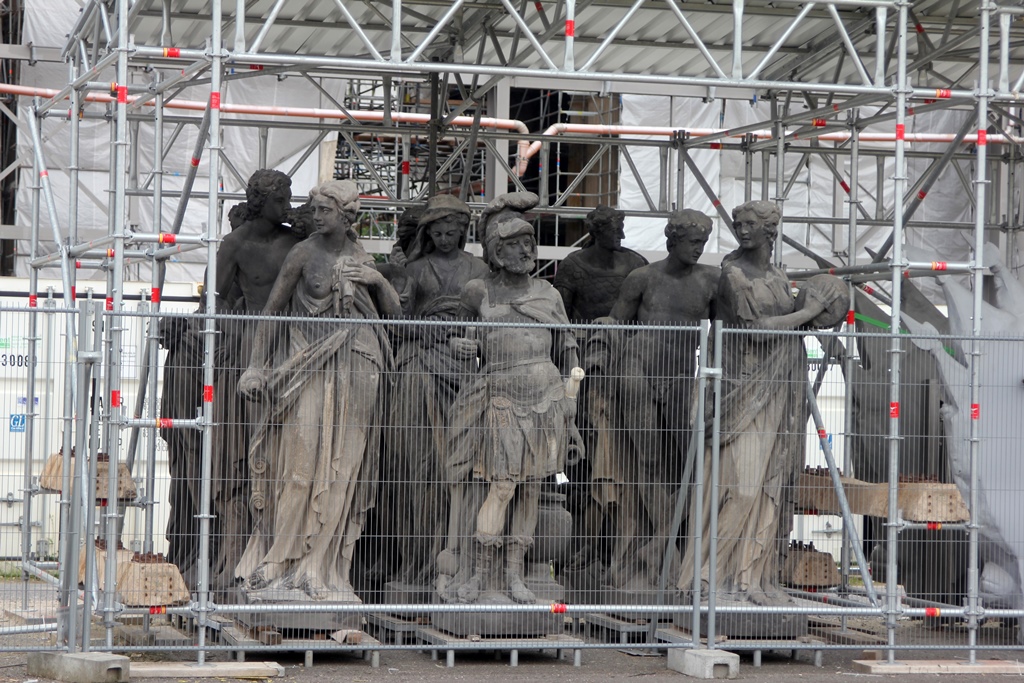
Sheltered Statues
Communs and Palace
We directed our attention to the palace itself, on the right. It was
certainly much larger than Sanssouci, and was undergoing a certain amount
of renovation of its own. On and atop its brick façade were a number of
decorative sculptures, which are apparently made of sandstone. We
discovered after our visit that the bricks in the façade aren’t really
bricks at all, but a convincing brick pattern, painted on top of stucco.
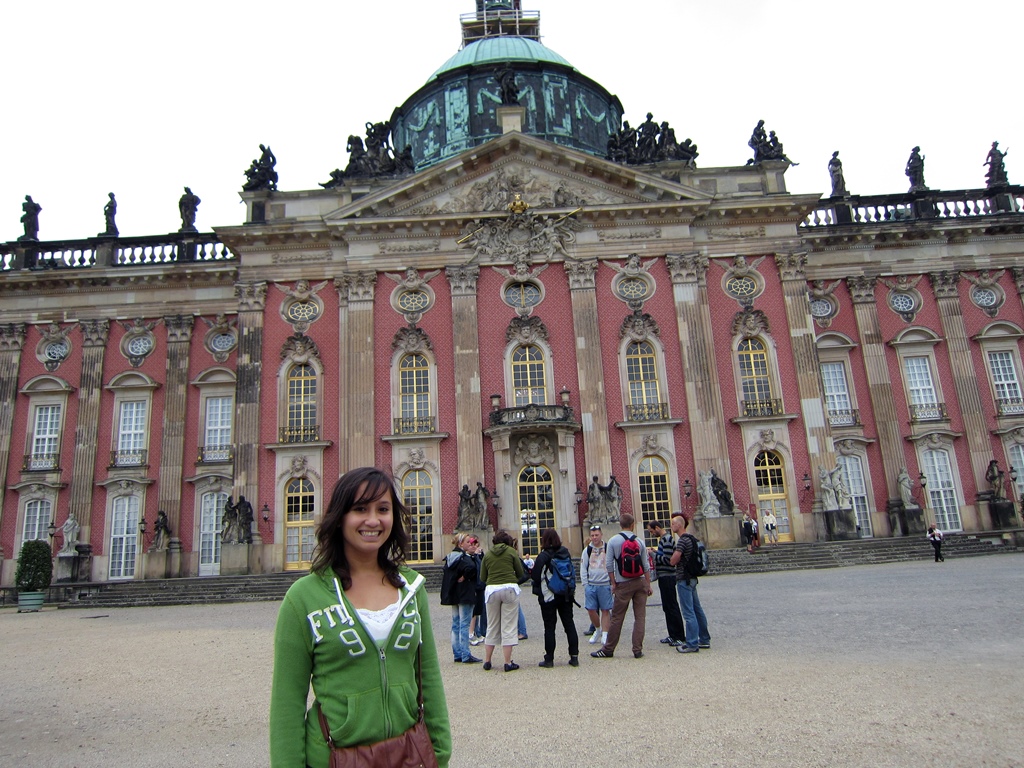
Connie and Western Façade
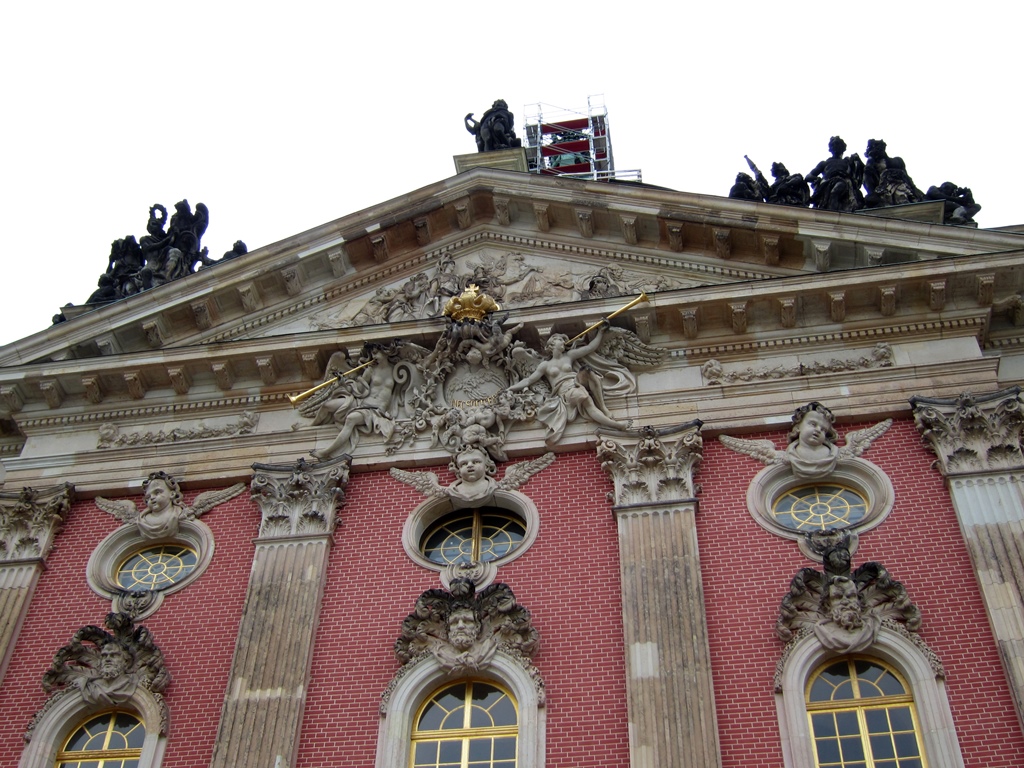
Ornamentation, Western Façade
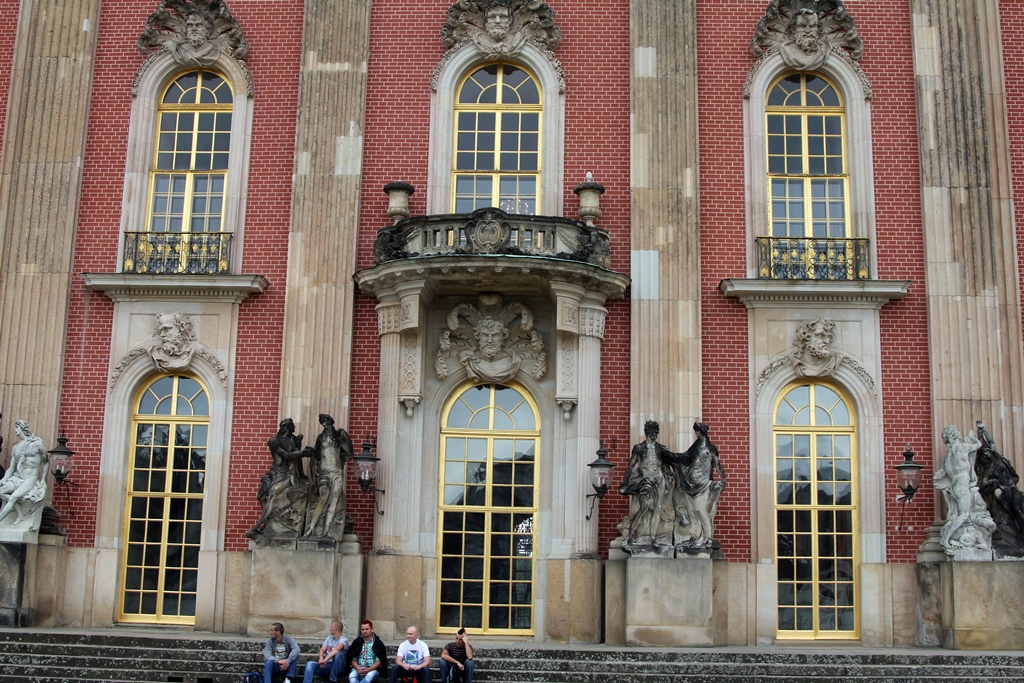
Doors and Windows, Western Façade

Walking Along Palace Front
We entered the building and flashed our Neues Palais passes, which gained us
audioguide headsets and entry into a large room called the Lower Vestibule. But
before we could enter this room we had to put on big fuzzy gray slippers, to
protect the marble flooring.
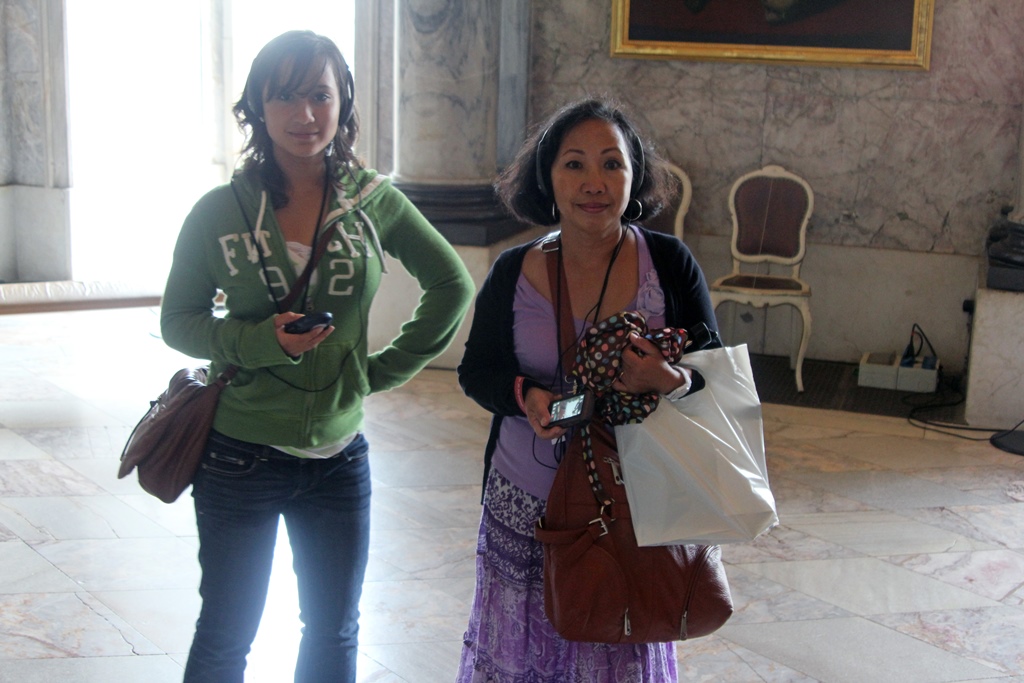
Connie and Nella with Headsets
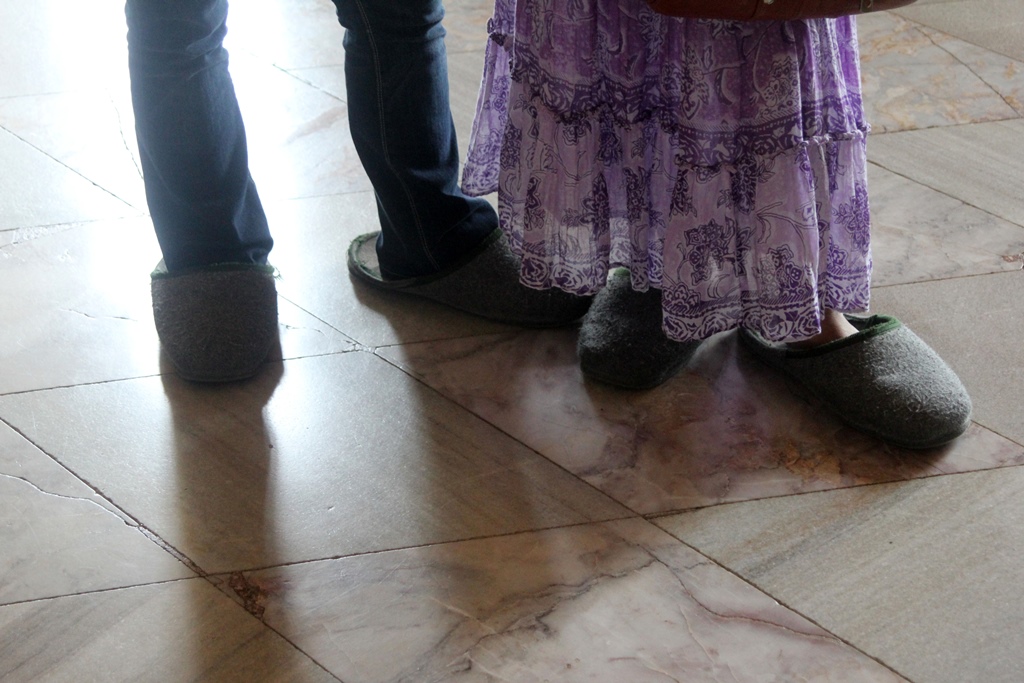
Connie and Nella Modeling Slippers
Adjacent to the Lower Vestibule is probably the most distinctive room in the
palace, a large room known as the Grotto Hall. The walls and columns of the
Grotto Hall are decorated with seashells, minerals and semi-precious stones.
There are also sculpted renderings of cherubs and sea serpents. Even the
marble of the floor is inlaid with renderings of sea life.
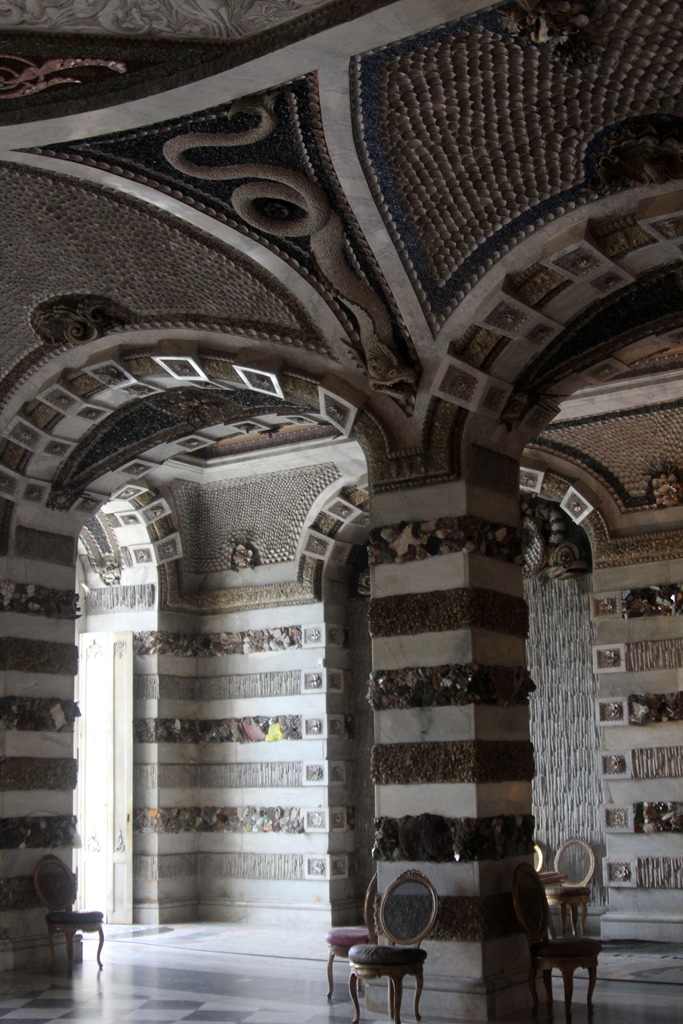
Column and Ceiling, Grotto Hall
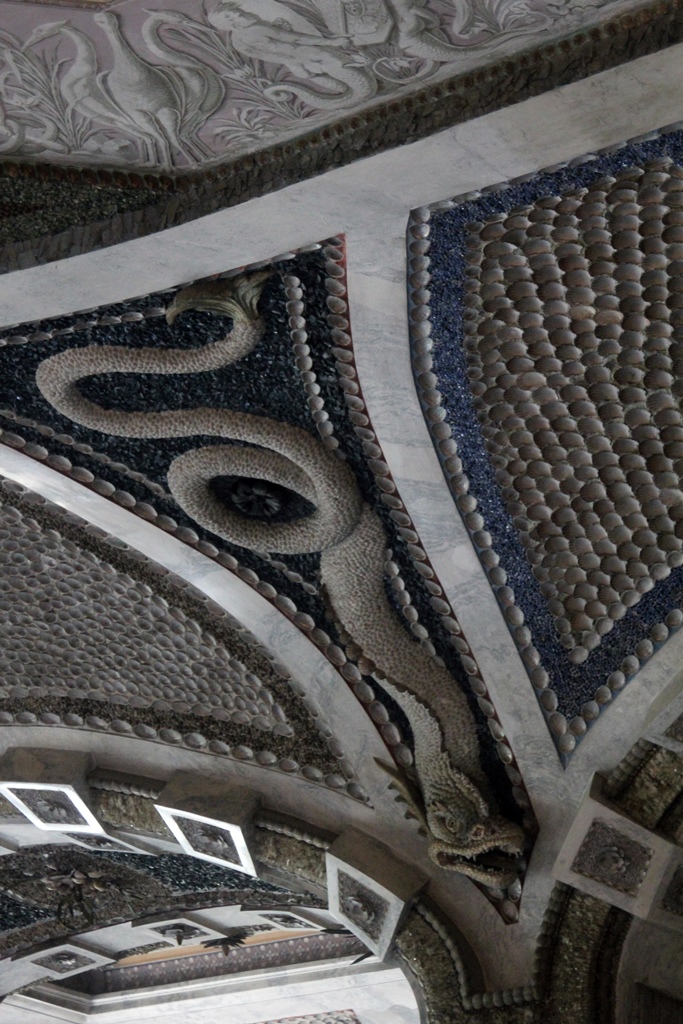
Sea Serpent on Ceiling
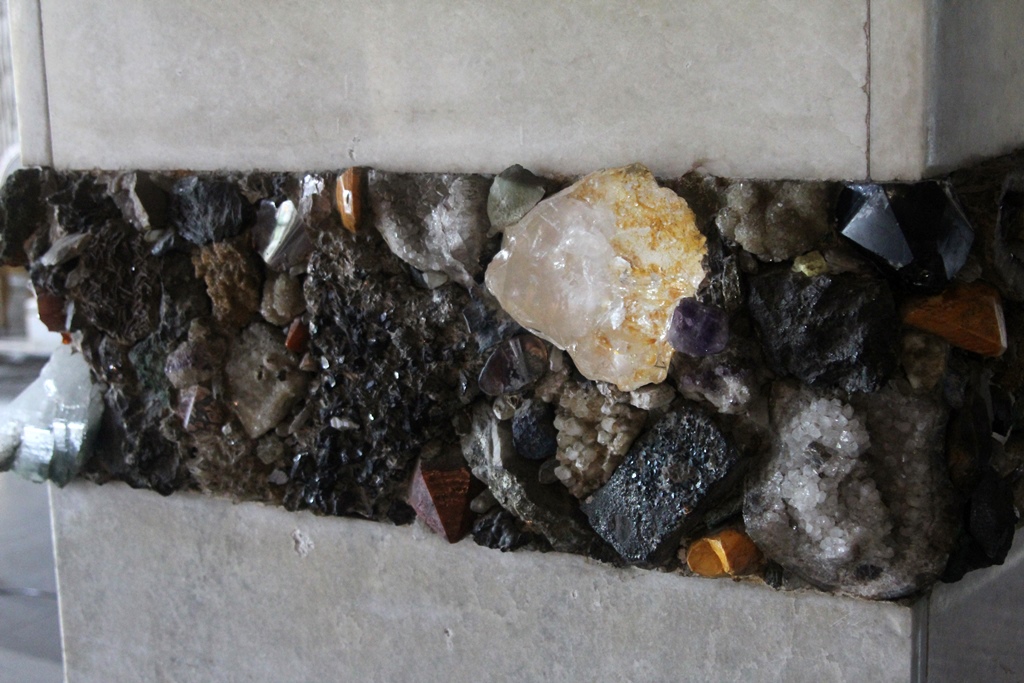
Pretty Rocks
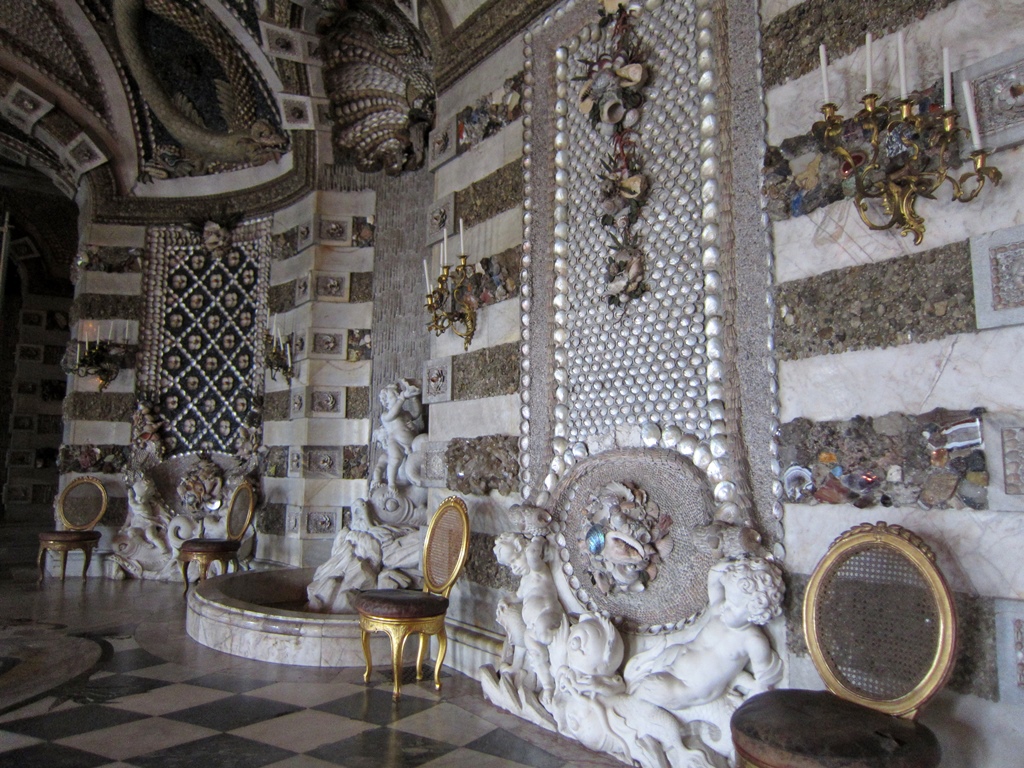
Decorated Wall
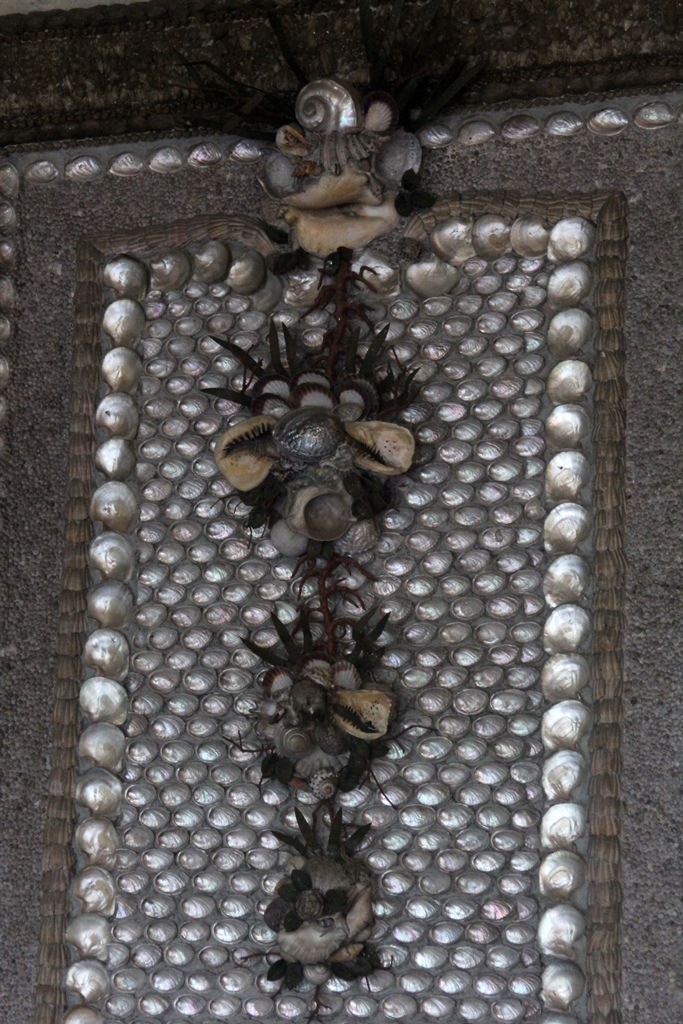
Niche Decorated with Shells
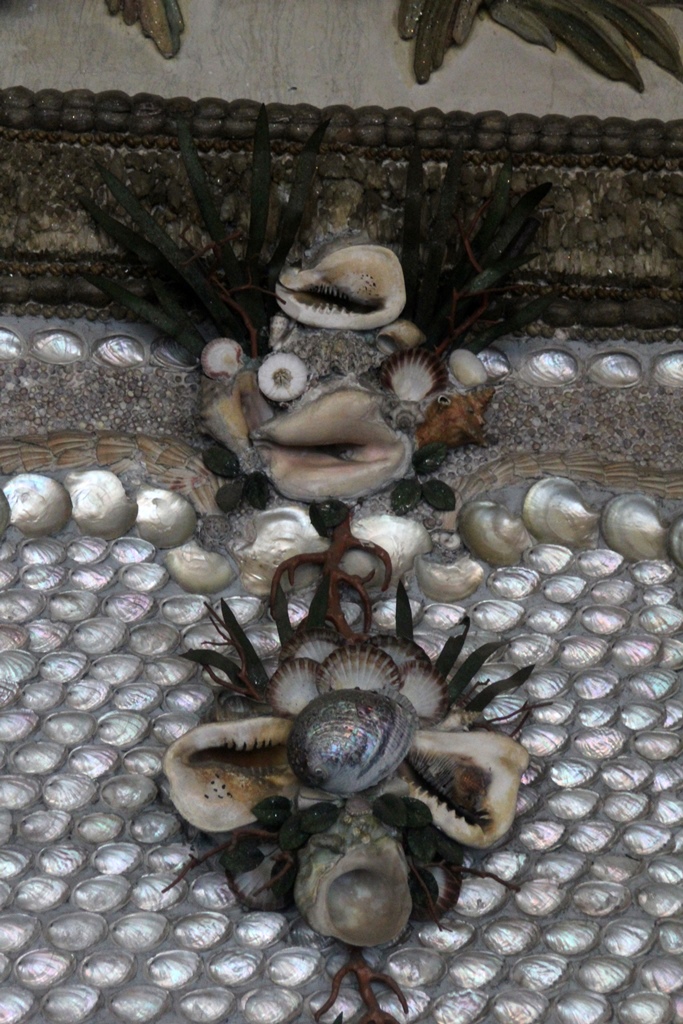
Shell Arrangement
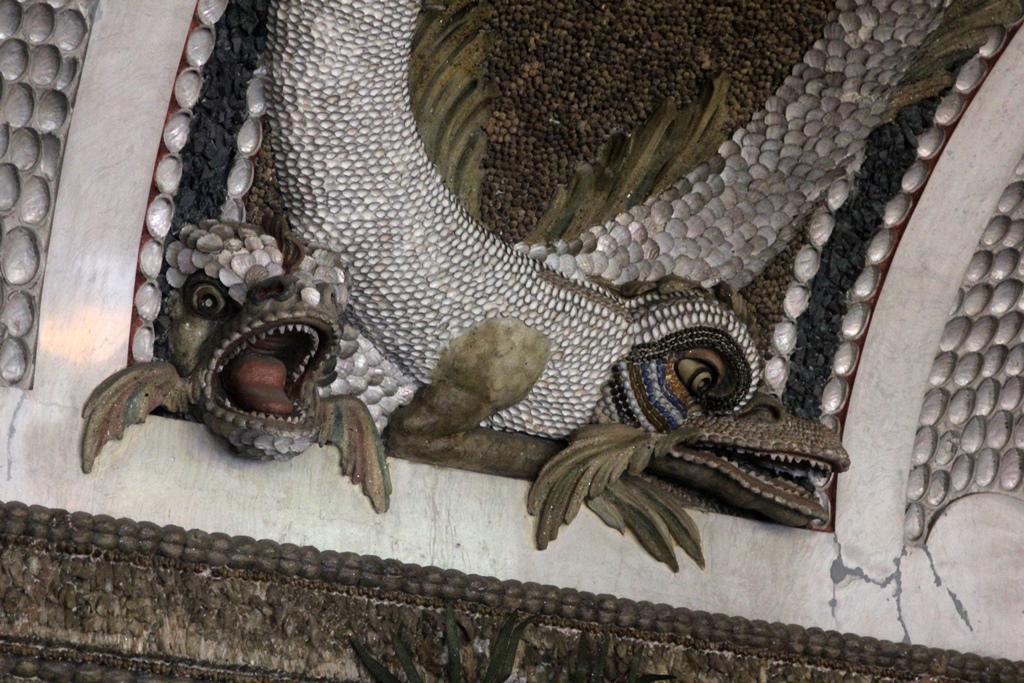
Entwined Sea Serpents
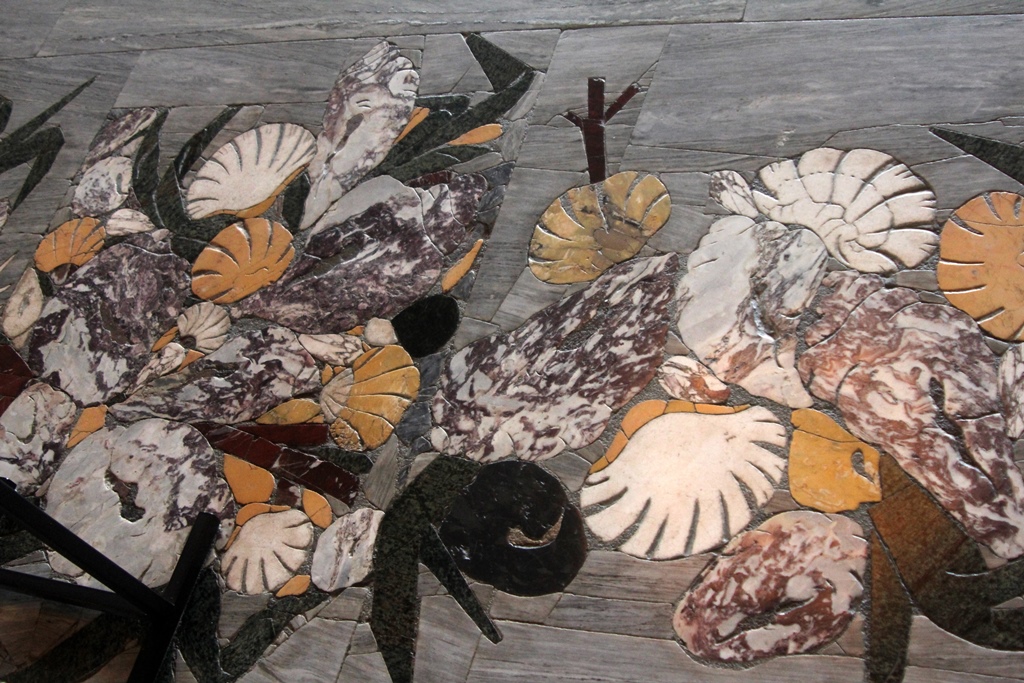
Floor Detail
Connected to the Grotto Hall but inaccessible to visitors on this particular
day is another large room called the Marble Gallery. Inaccessible but not
entirely invisible, as we could see some of it through an open door.
Marble Gallery
From here we were able to walk through several other rooms, decorated in a more
conventional palatial manner. In evidence was more of the Frederician Rococo
style that we had seen at Sanssouci.
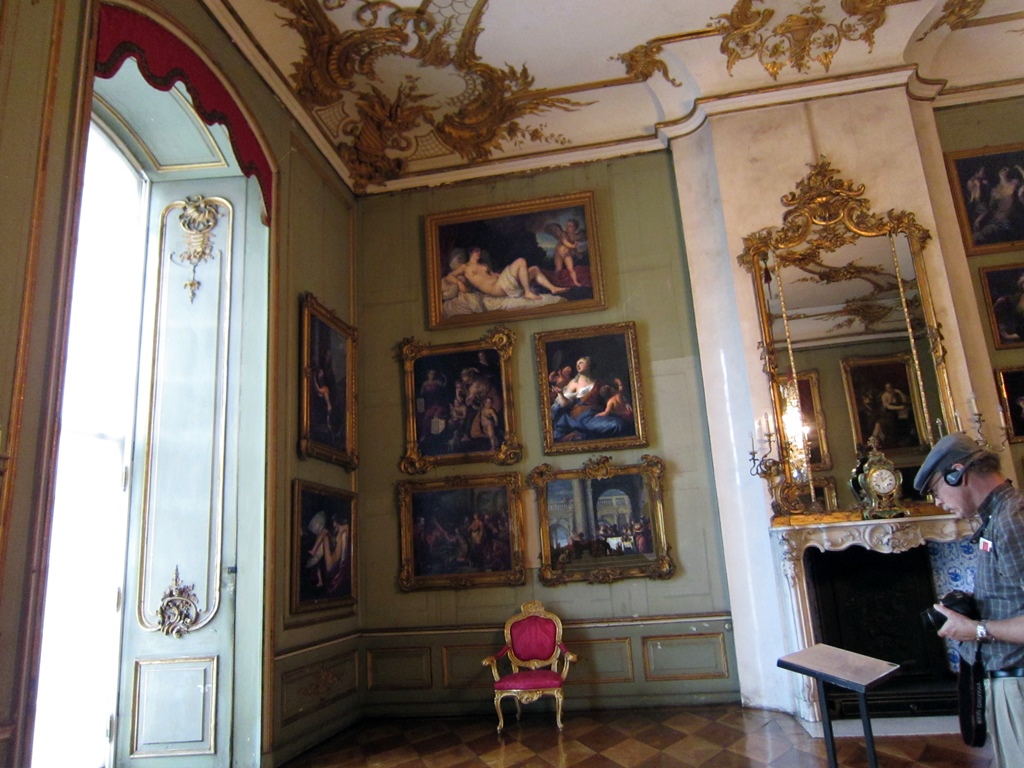
Bob and Paintings
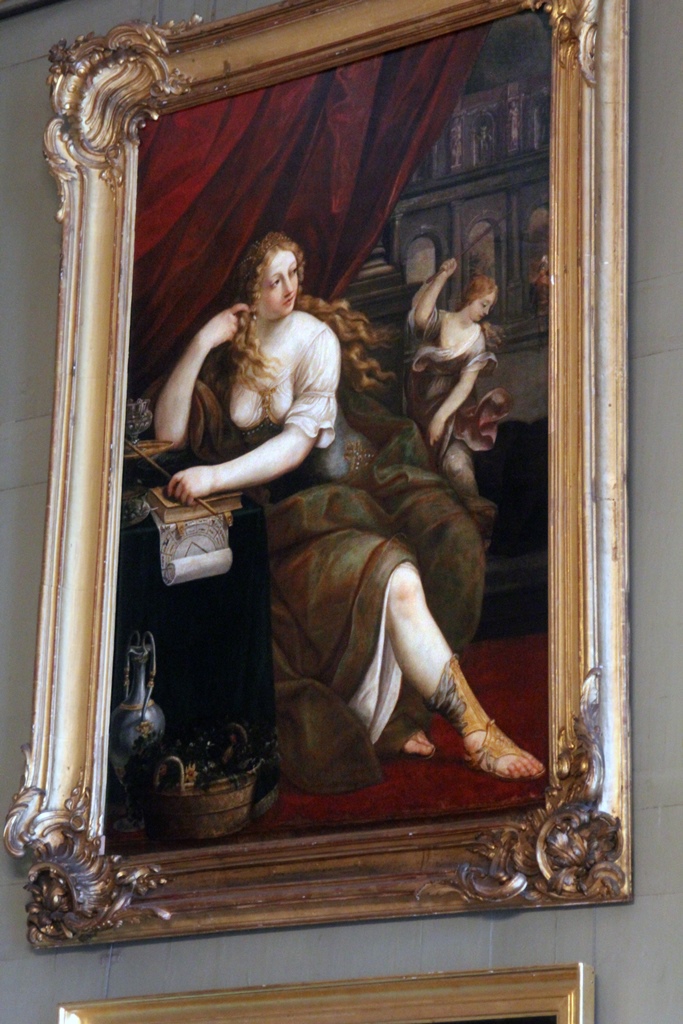
Painting of Young Woman
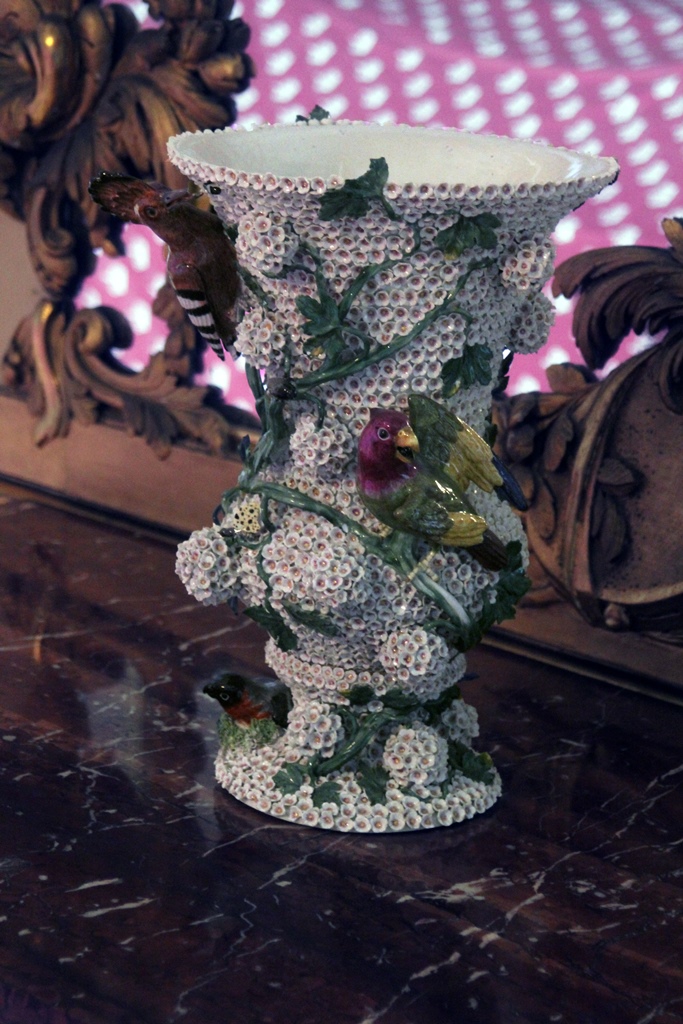
Elaborate Vase with Birds
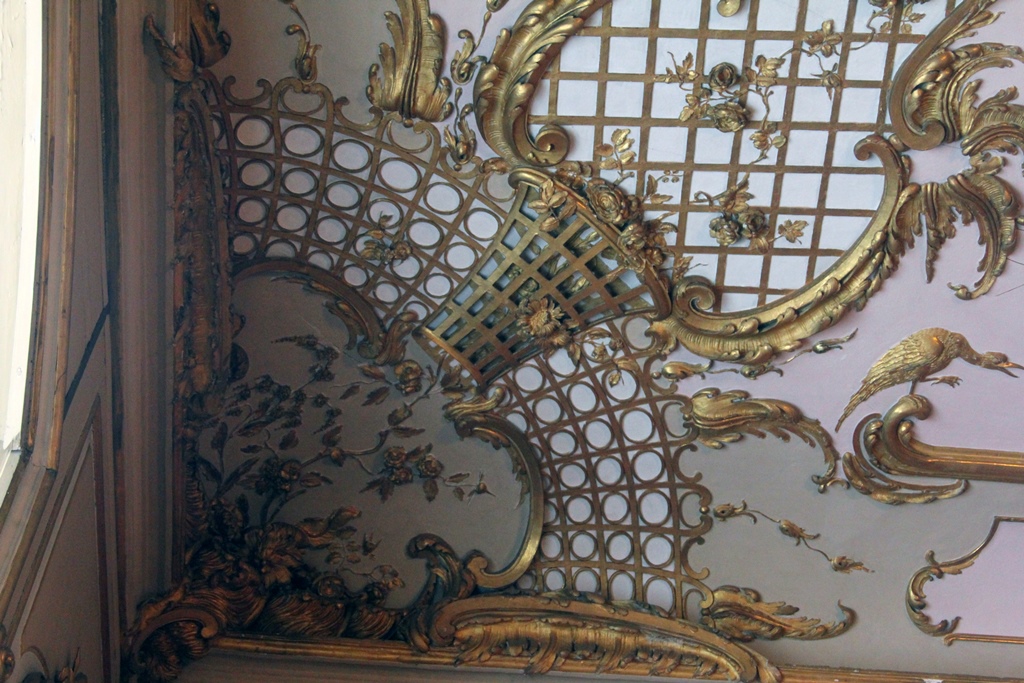
Decorated Ceiling
We then came to a room that was more somberly decorated, with a black cross painted
on the floor. This was the death chamber of Frederick III, who died here in 1888.
This Frederick was the opposite of the previous Frederick in a number of ways.
First, he liked the Neues Palais very much. Second, while he was also included in
an arranged marriage (to the eldest daughter of Queen Victoria and Prince Albert of
Great Britain, also named Victoria), his marriage was a long and happy one.
Frederick III and Victoria, Princess Royal, produced eight children, one of whom
grew up to become Kaiser Wilhelm II, the last Emperor of Germany. Third, while
Frederick served well in the Prussian wars that took place during his adult life,
he was much more of a pacifist than the earlier Frederick. And fourth, while
Frederick the Great’s reign was long and eventful, Frederick III’s lasted only 99
days, as he was already suffering from cancer of the larynx when he succeeded to
the throne.
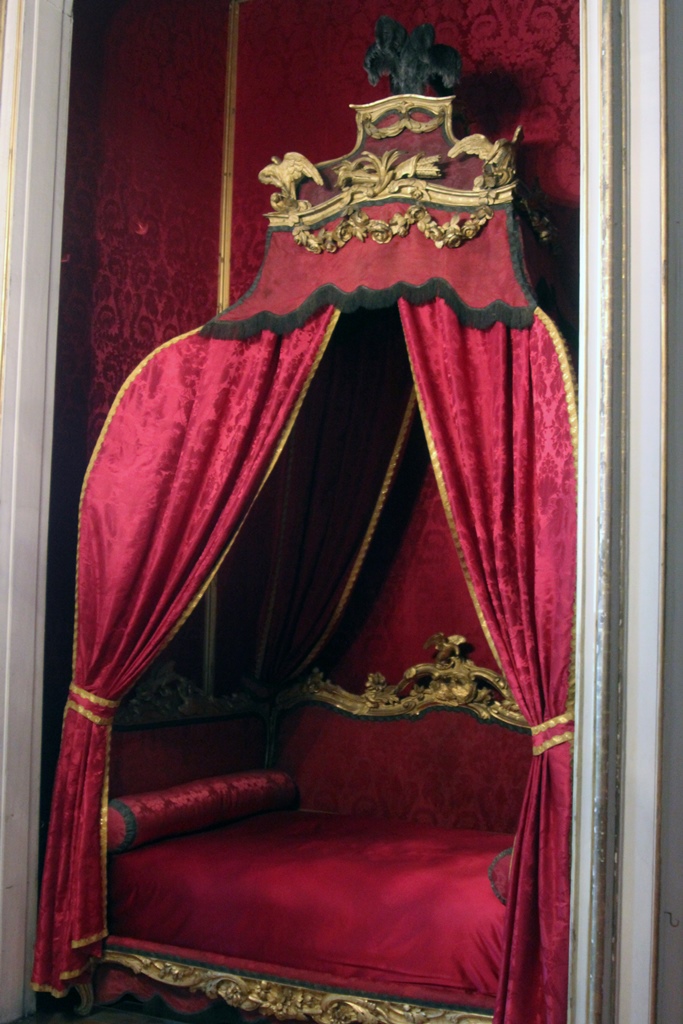
Deathbed of Frederick III
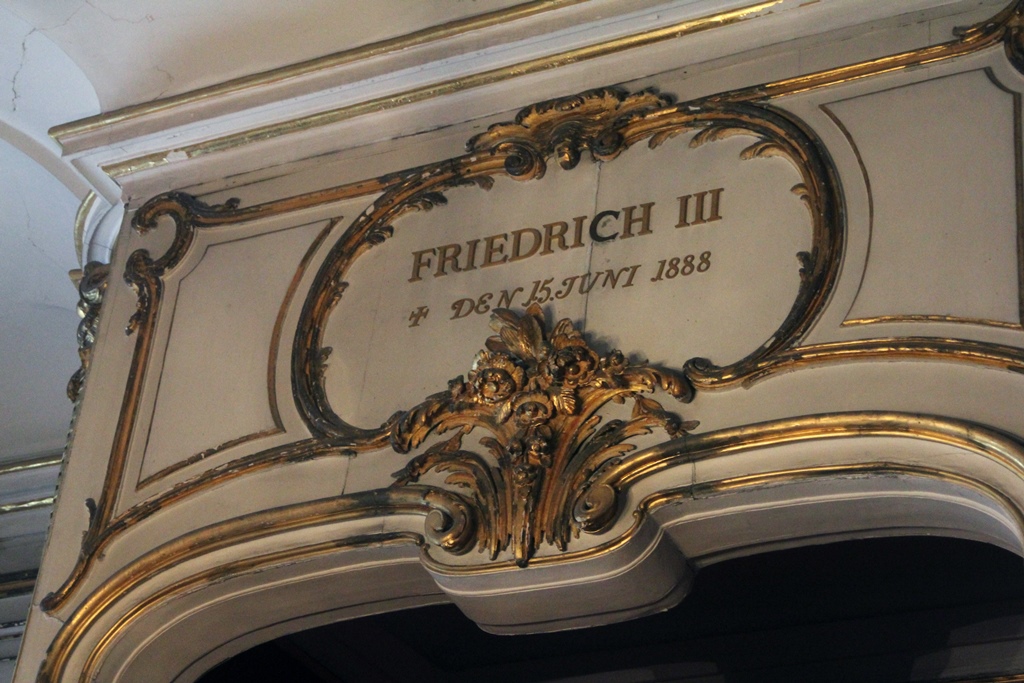
Legend
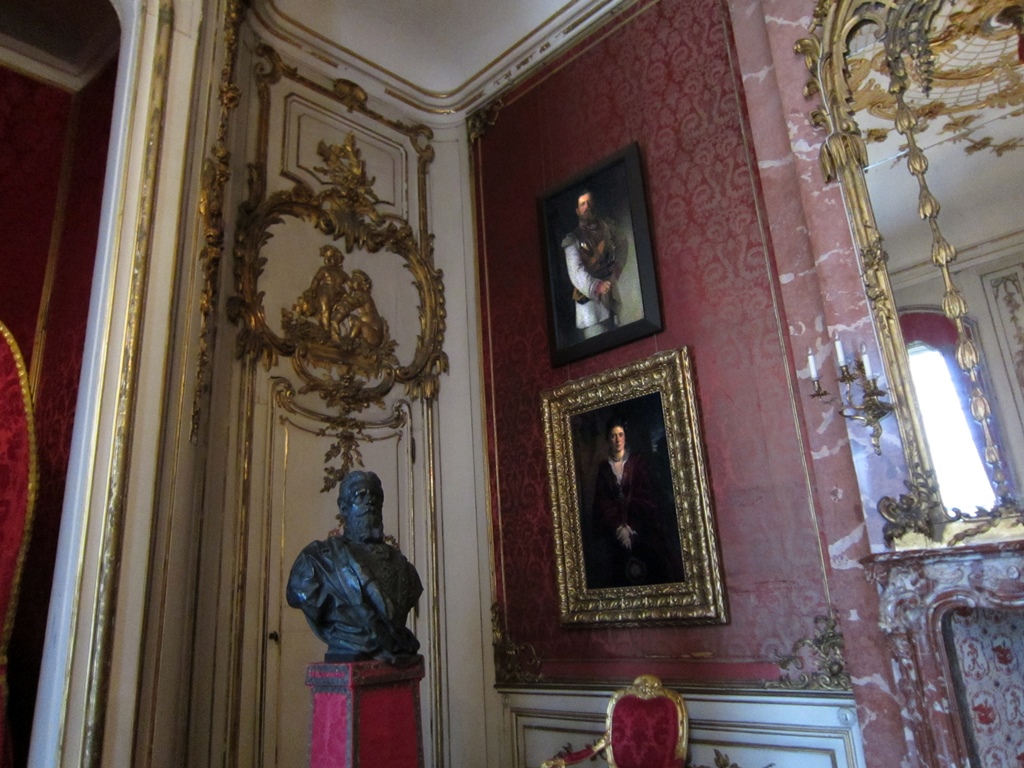
Portraits of Frederick and Victoria
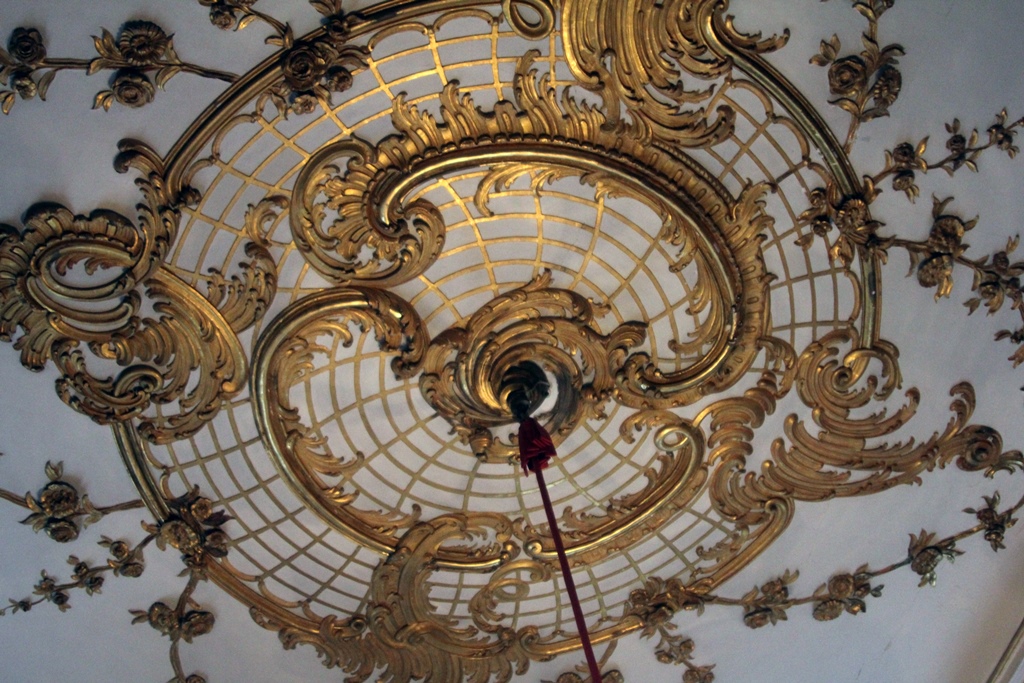
Another Decorated Ceiling
We continued through several other rooms, all ornately decorated.
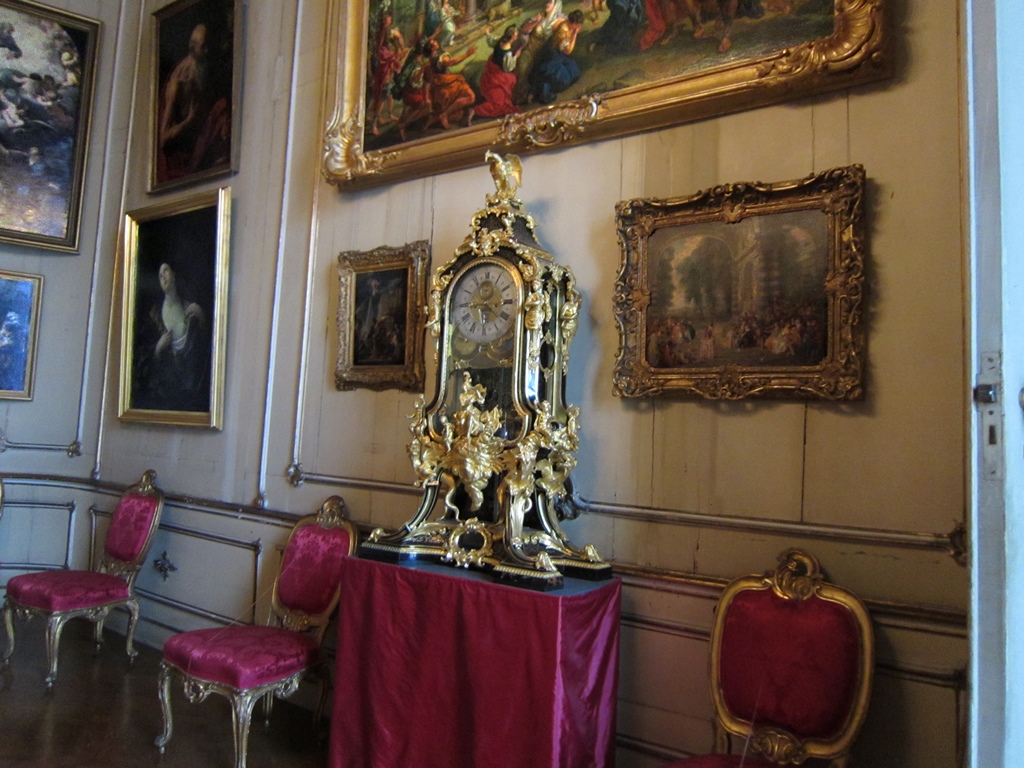
Clock and Paintings
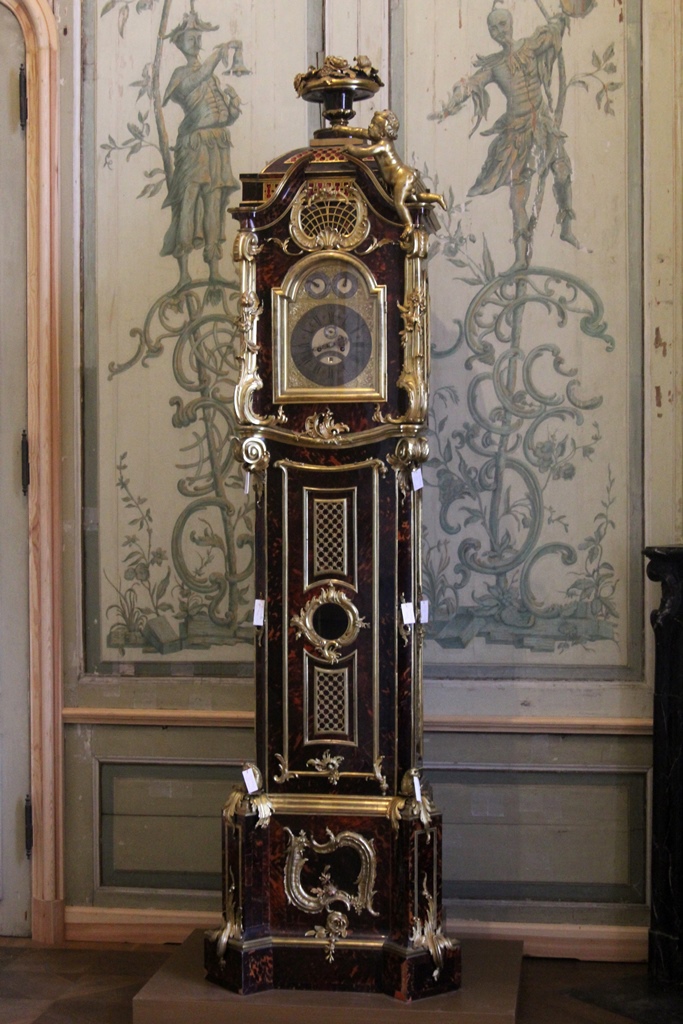
Grandfather Clock
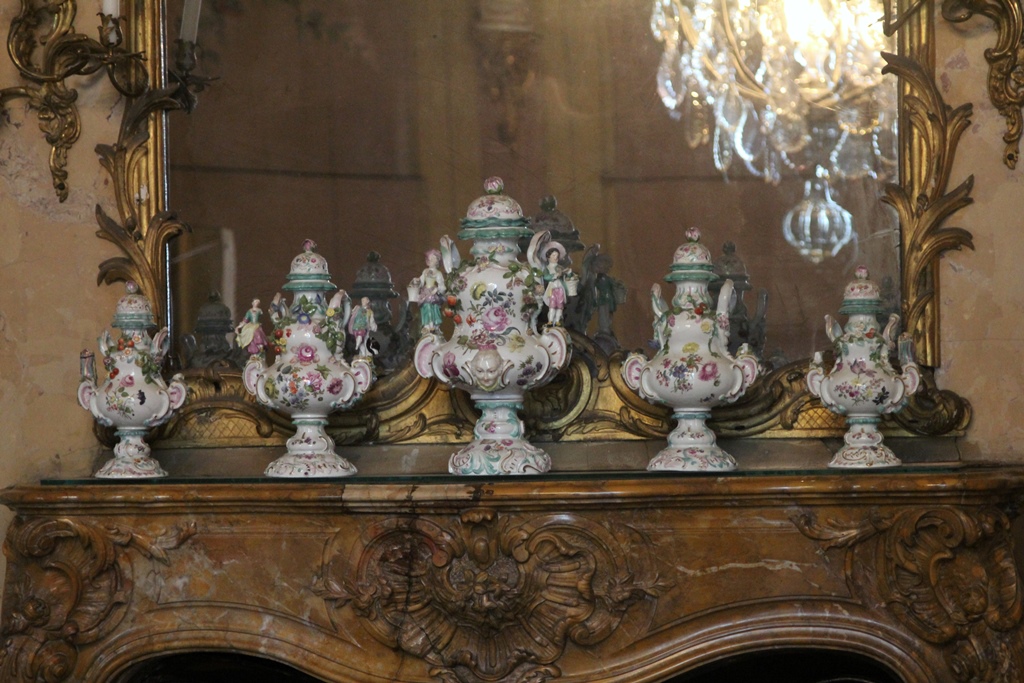
Porcelain on Mantelpiece
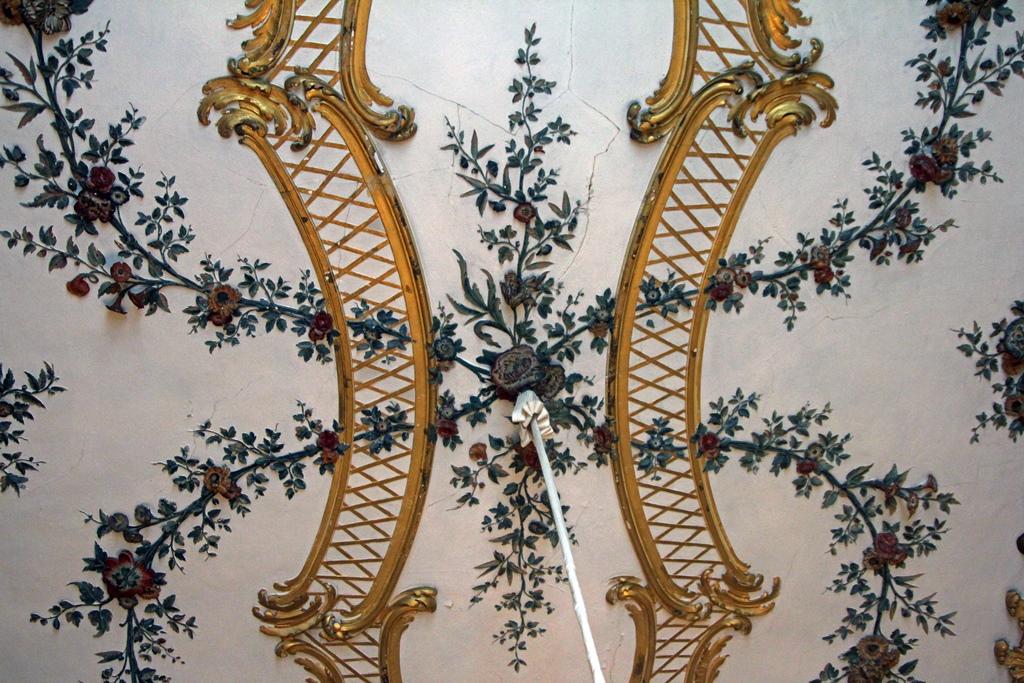
Ceiling with Flowers
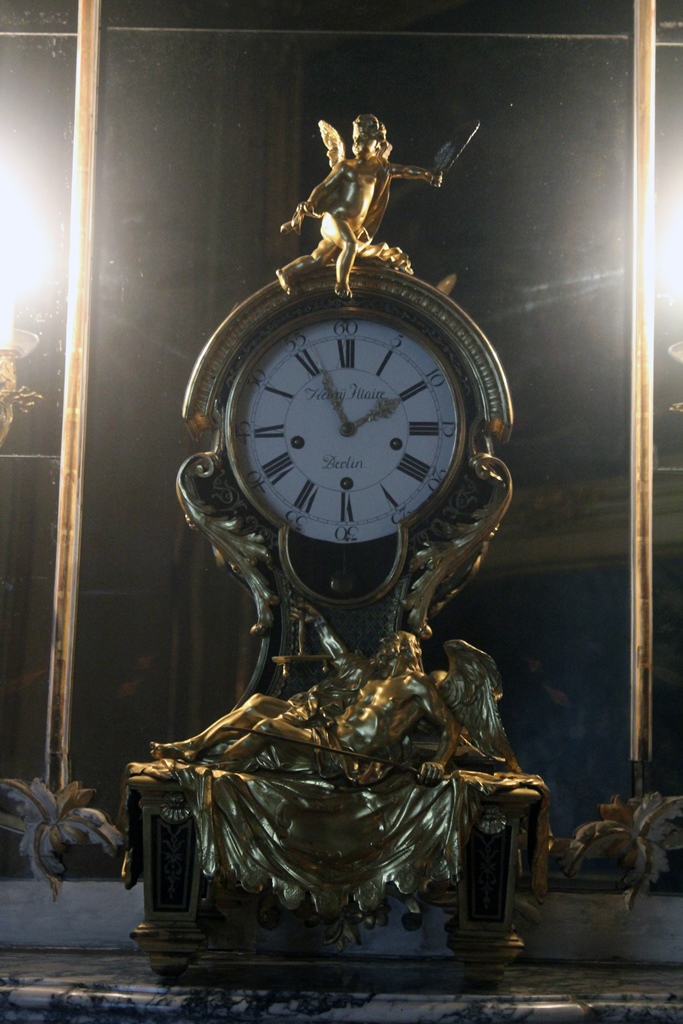
Clock
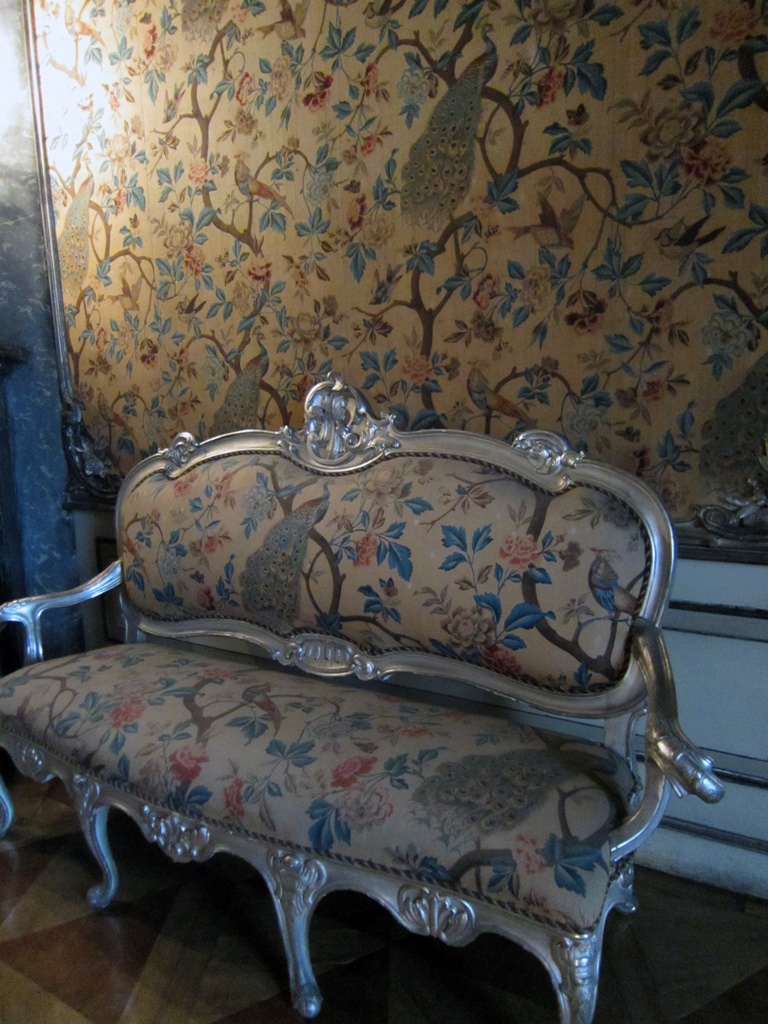
Wallpaper with Matching Couch
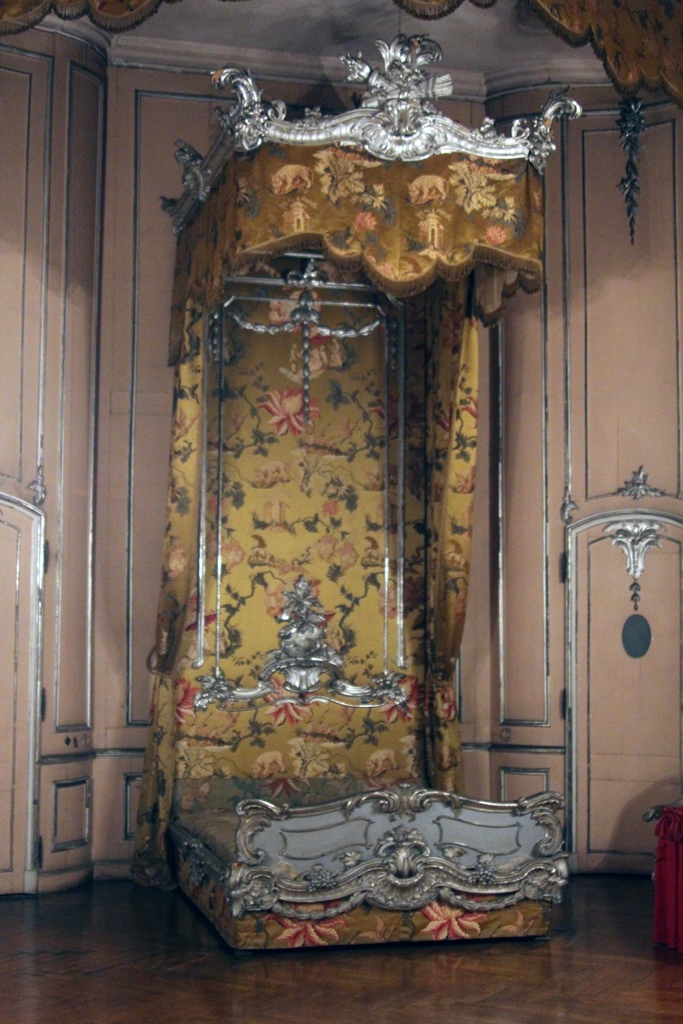
Bed, Bedroom of the Princess
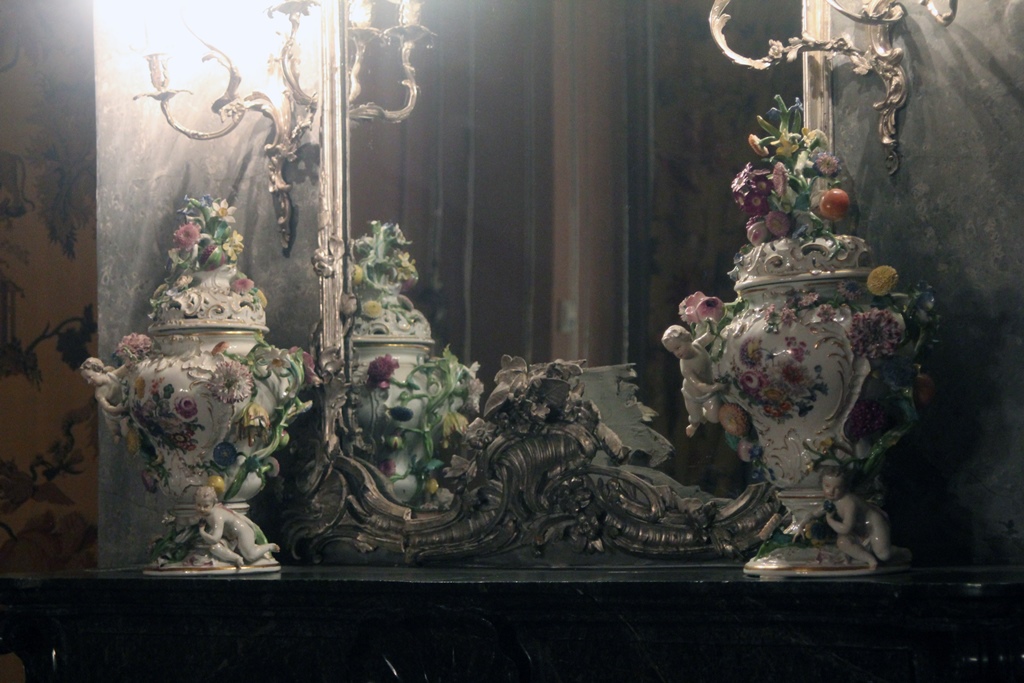
Porcelain, Bedroom of the Prince
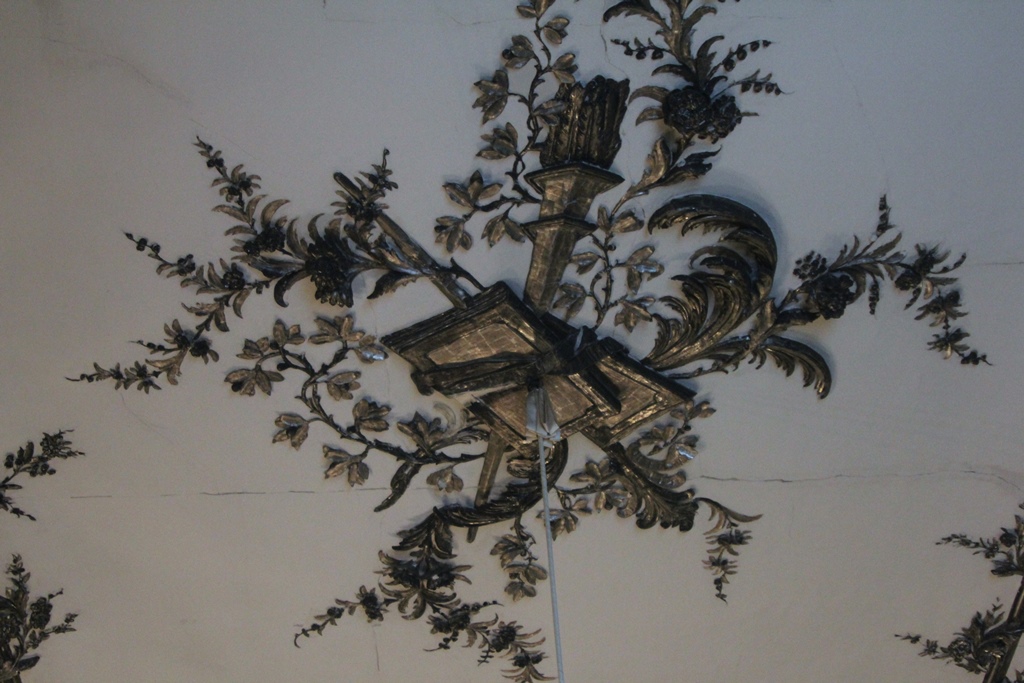
Ceiling Decoration, Writing Cabinet
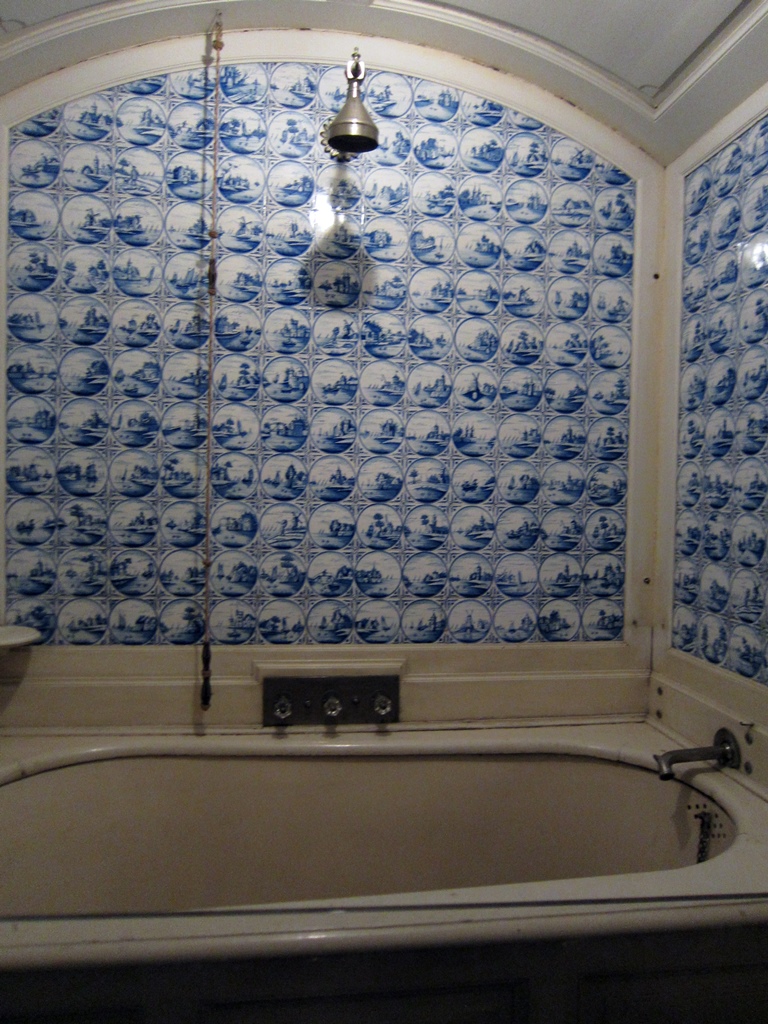
Bathroom
Eventually the visitor route took us upstairs, where there were many more
rooms. One such room was called the Hunting Room, and was decorated with
details related to hunting (dogs, guns, birds, etc.), of which Frederick II
was very fond.
Hunting Room
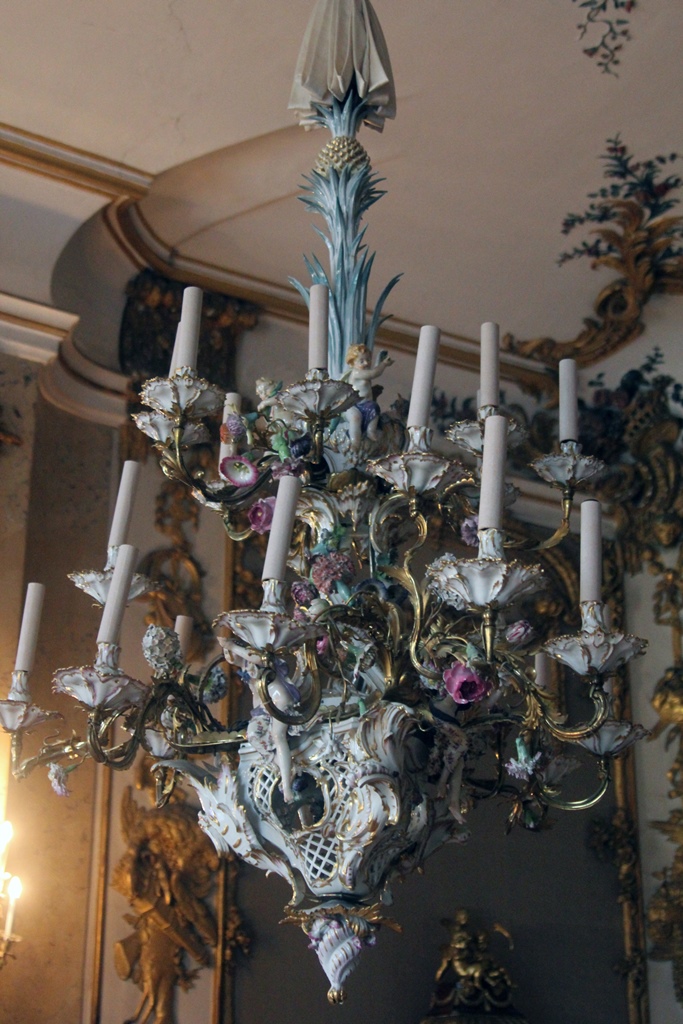
Porcelain Chandelier
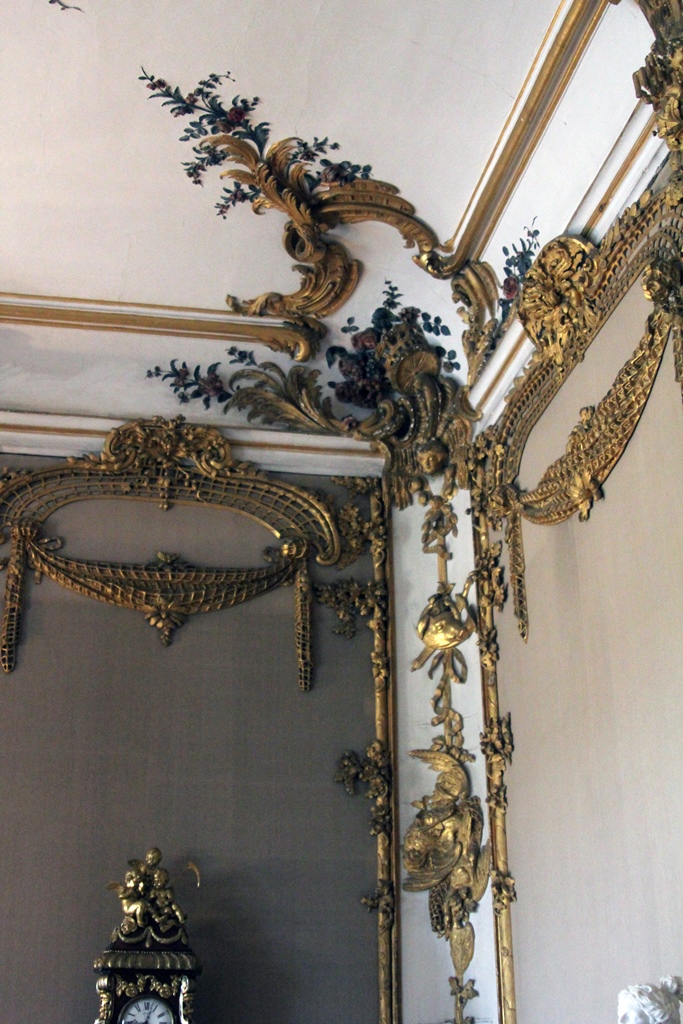
Corner
More rooms and decorations followed.
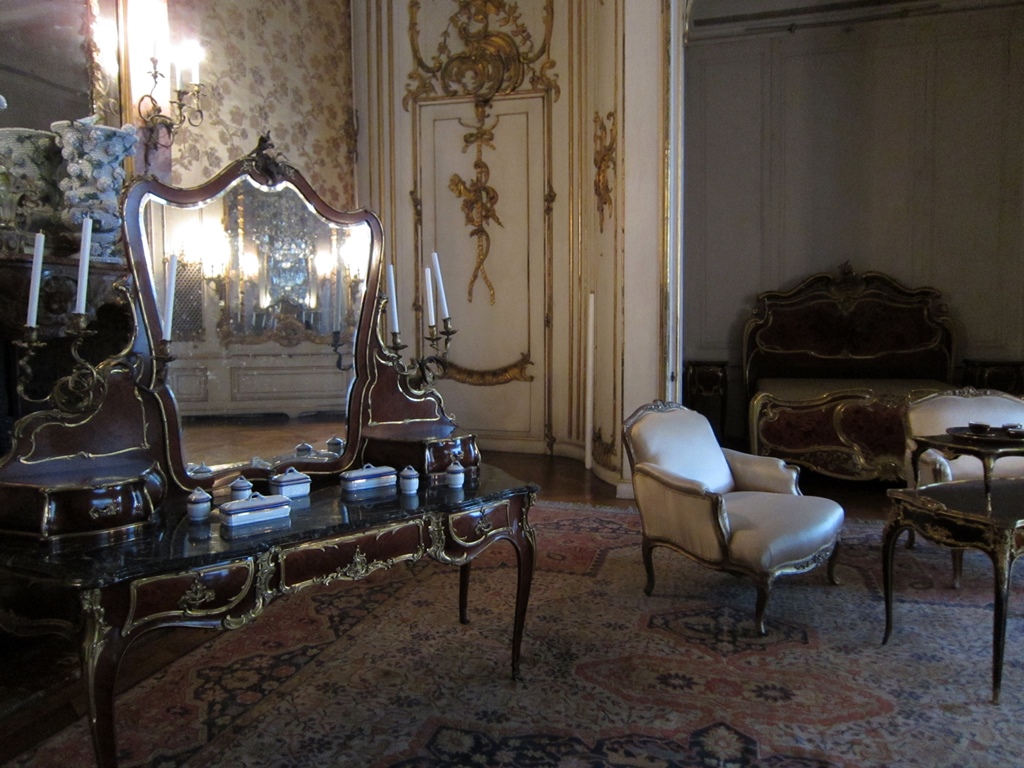
Furniture, Ladies Bedroom
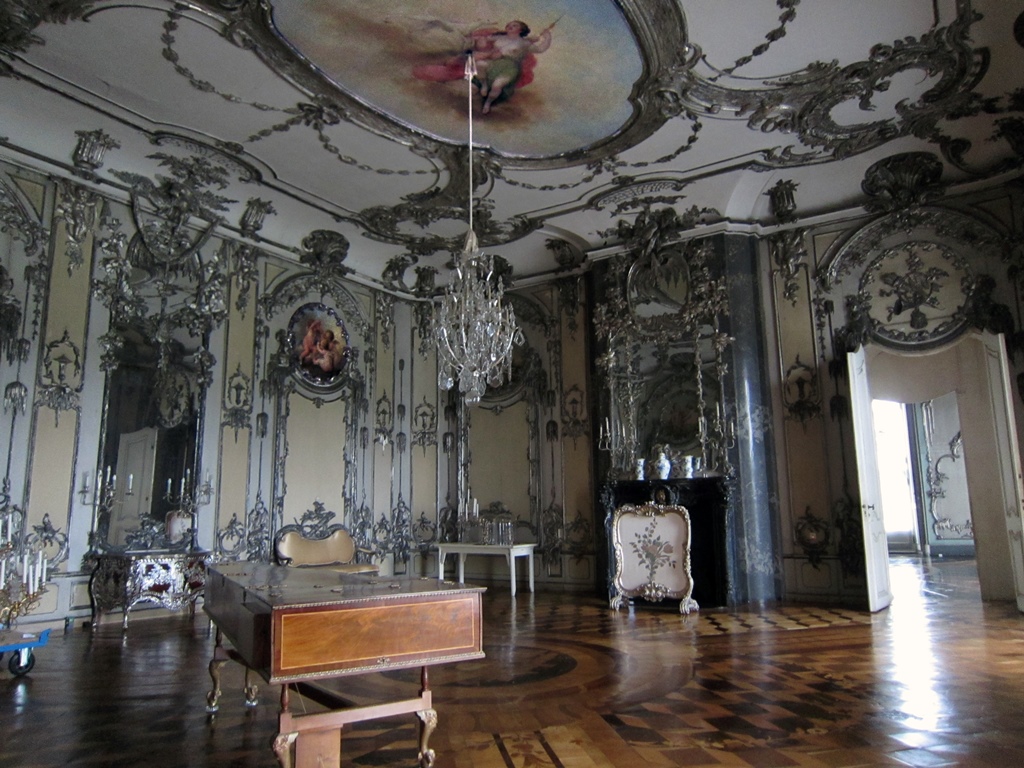
Concert Room
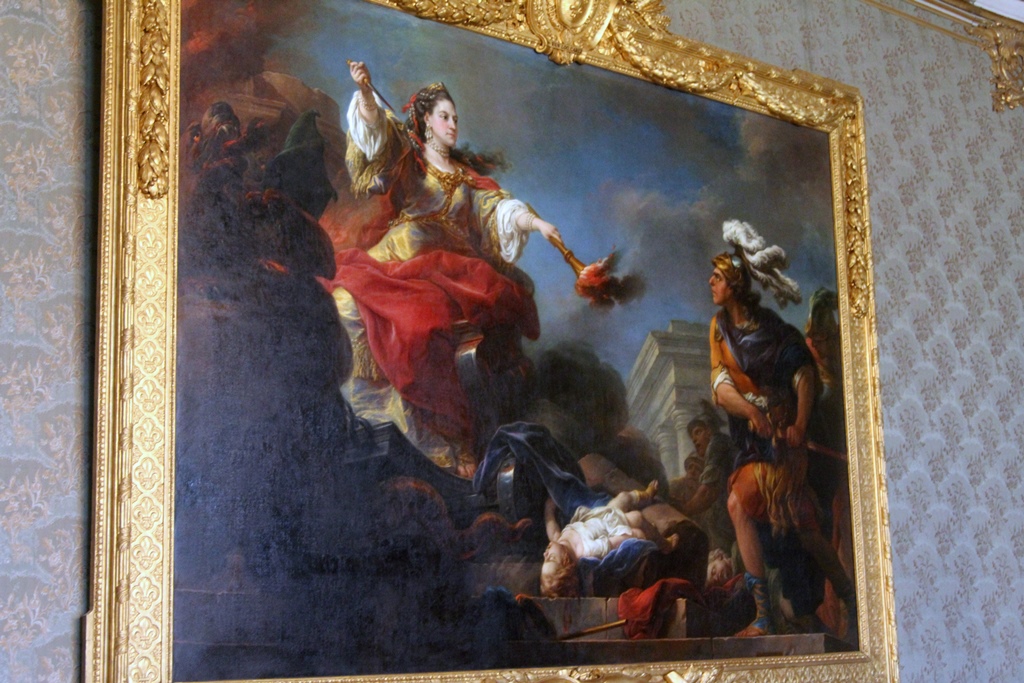
Painting, Green Damask Room
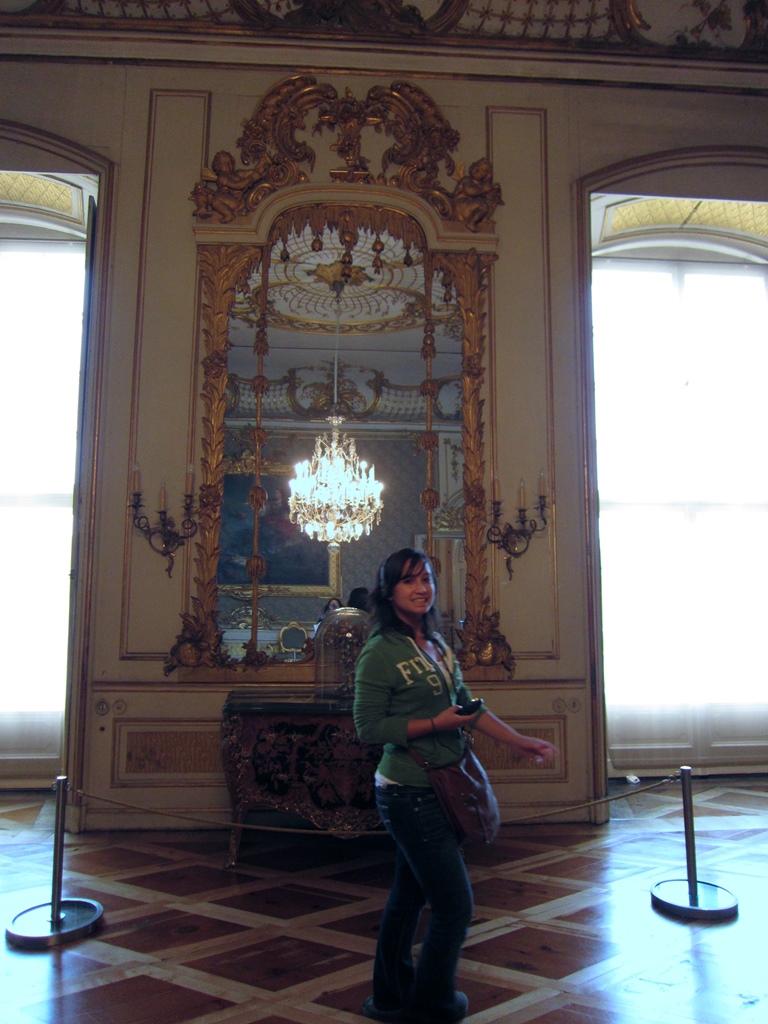
Connie and Mirror
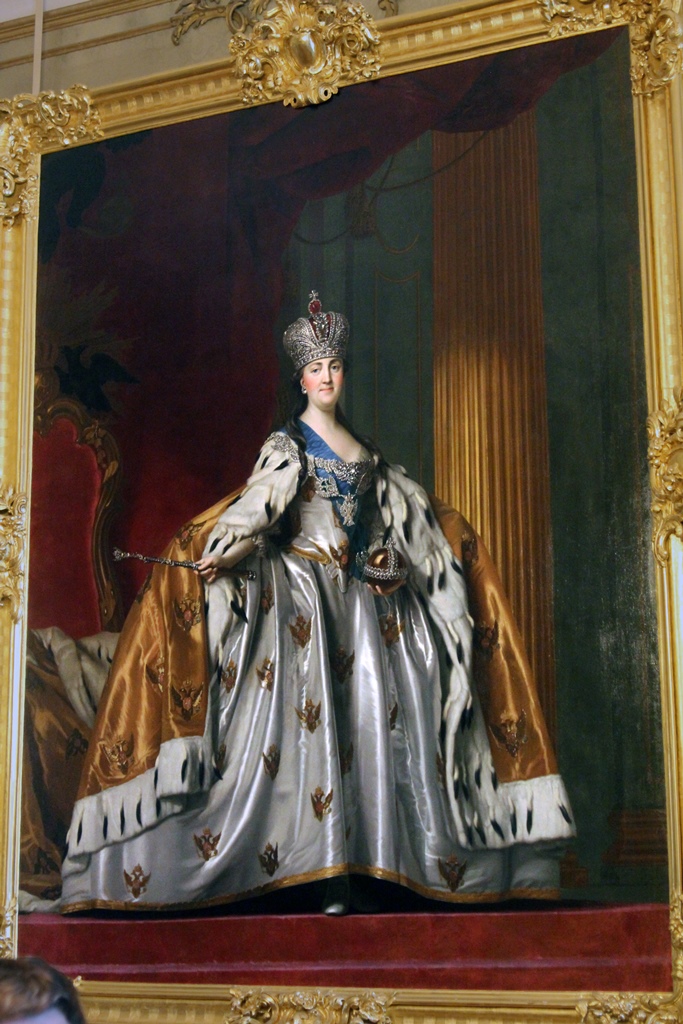
Portrait of a Queen
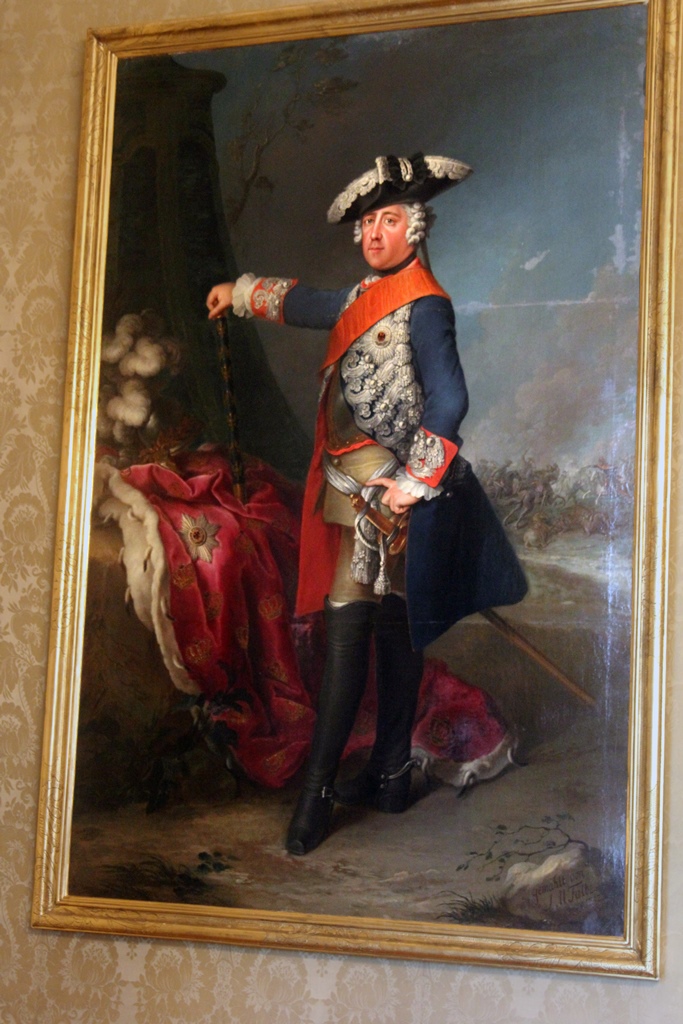
Portrait of a King
Porcelain with Large Birds
We eventually came to a large room called the Marble Hall (not to be confused
with the Marble Gallery on the ground floor), which was obviously used for large
gatherings.
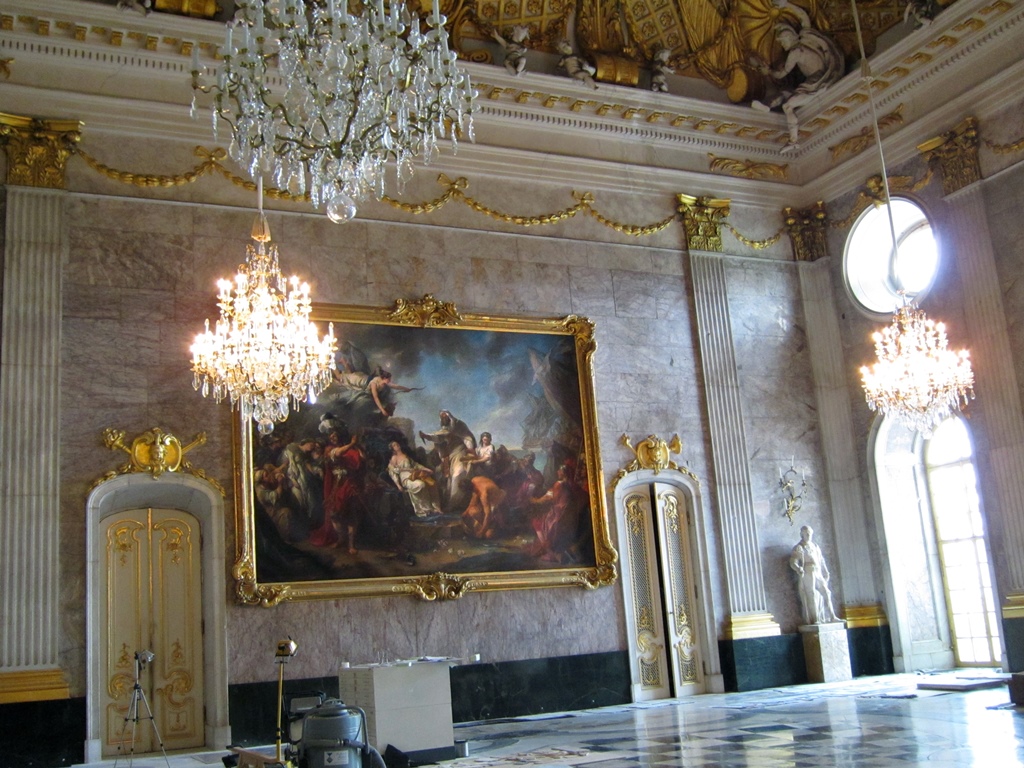
Painting and Chandeliers, Marble Hall
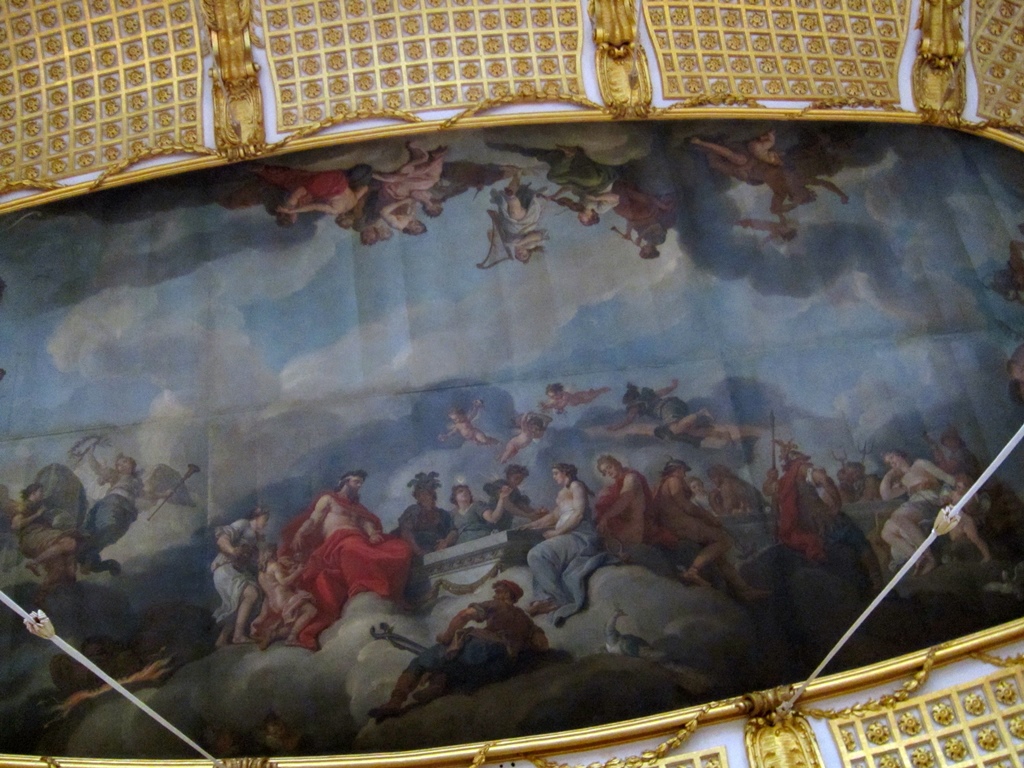
Ceiling Painting
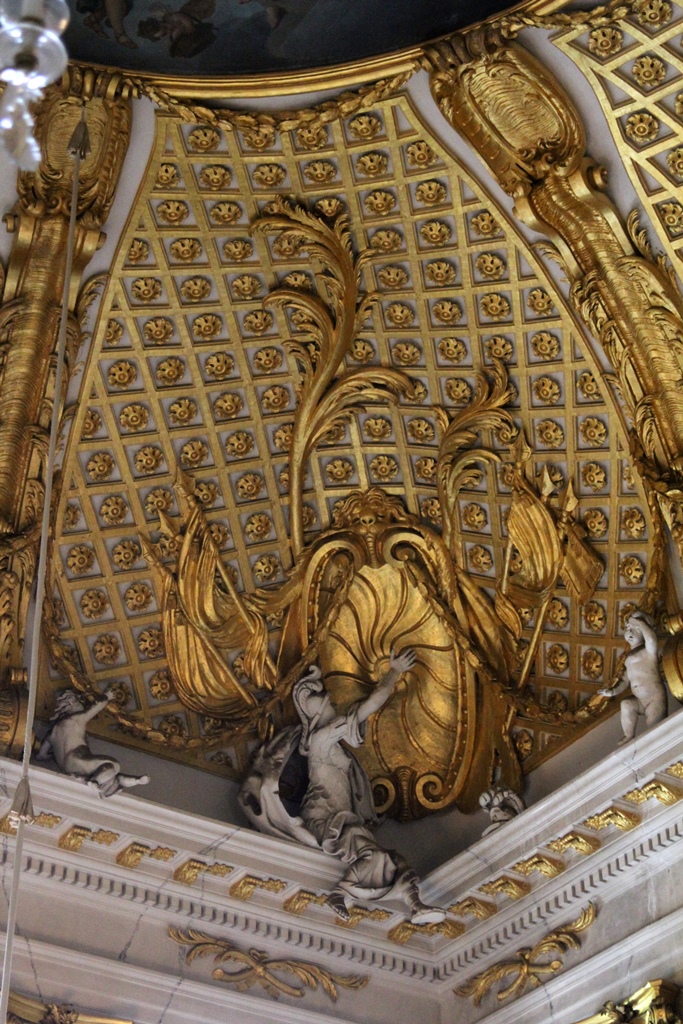
Corner of Ceiling
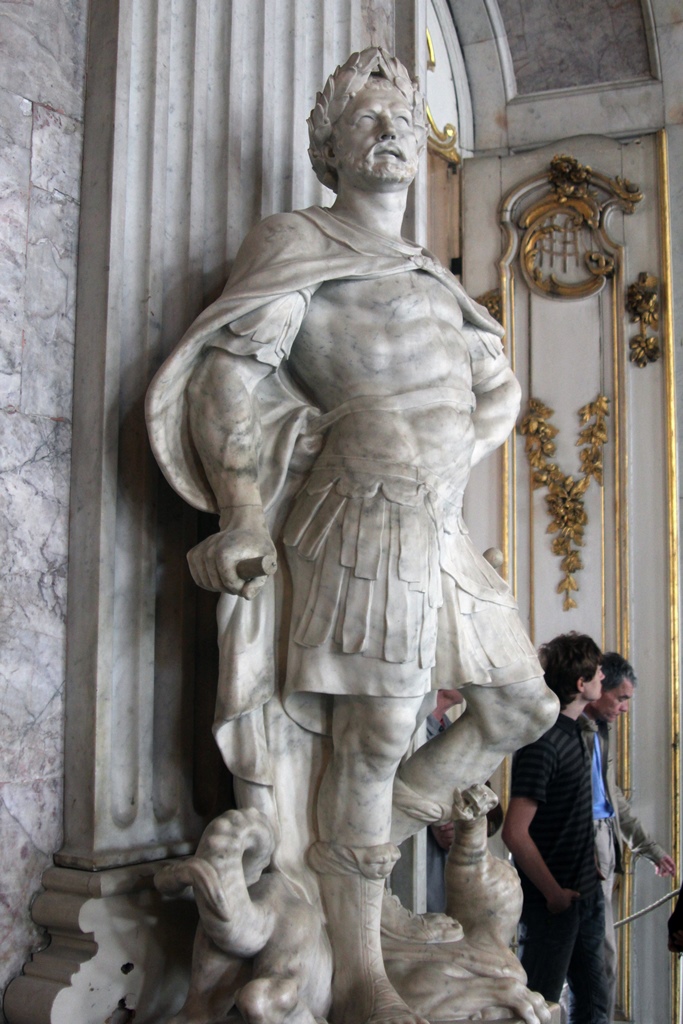
Statue
We then reached a stairway that took us back down, leading us to a room called
the Red Damask Chamber, a reference to its wall coverings. Hung on the red
damask was an assortment of portraits, and in the middle of the room was a
large wooden model of a palace (apparently not the Neues Palais).
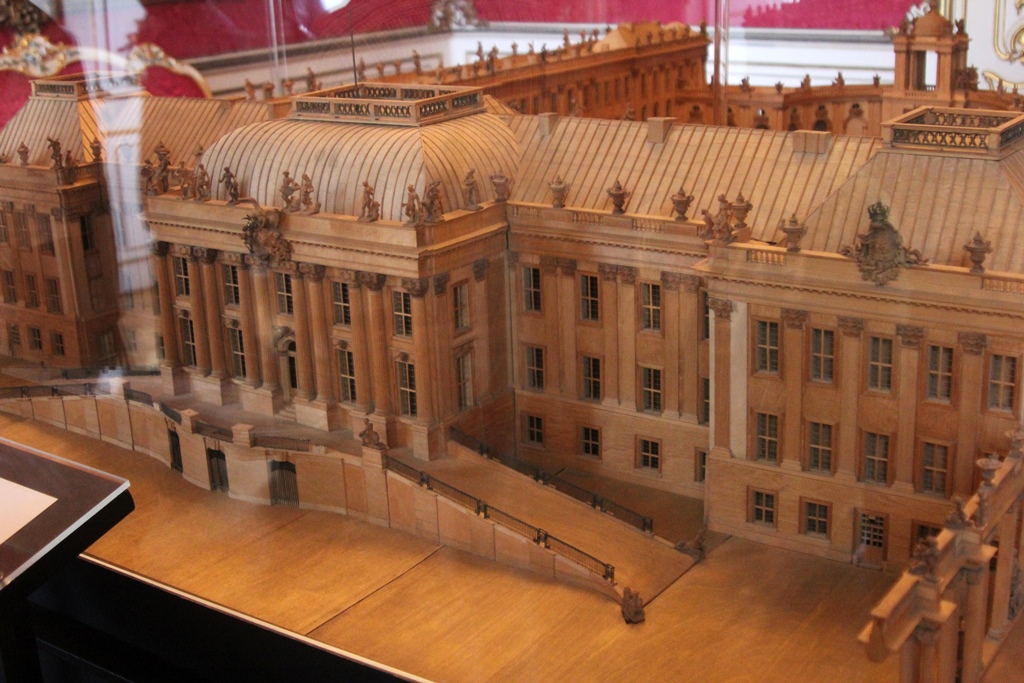
Model of a Palace
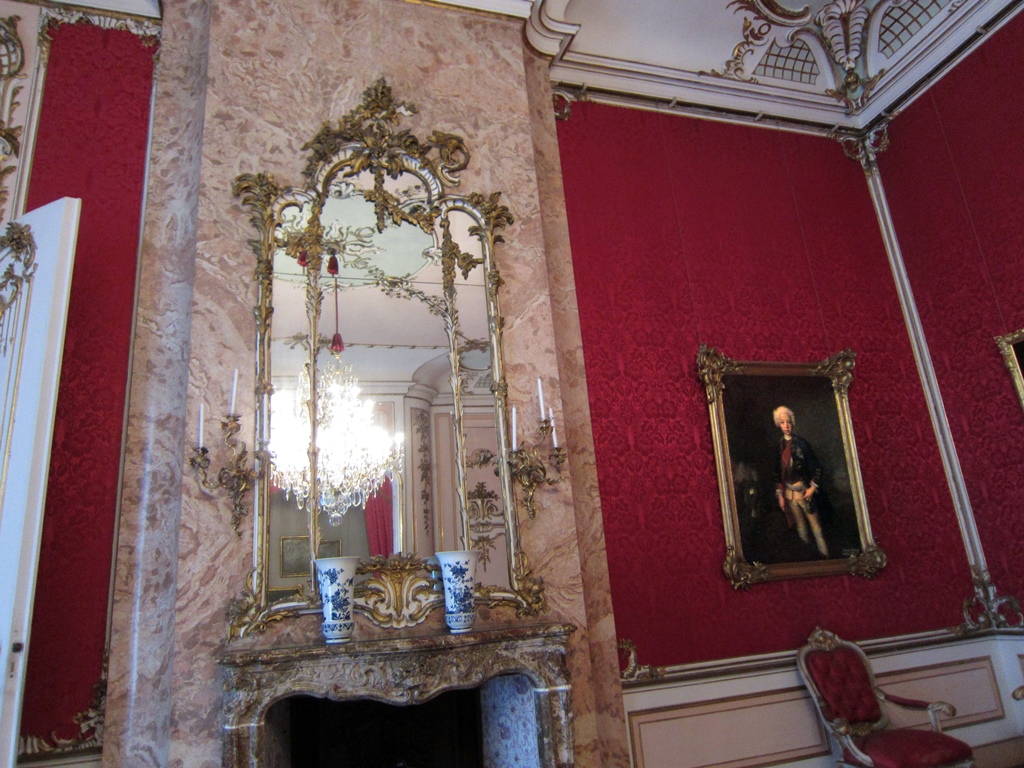
Mirror and Portrait
This concluded our tour of the Neues Palais, as well as our visit to the
viewpoints of Potsdam. We reboarded the bus and returned to the train
station. With it being well past 3 PM, we were more than ready for lunch.
Fortunately the train station had several places where food was available.
We found a fast food seafood place called Nordsee (nordzay), where we
fortified ourselves on ocean-based protein.
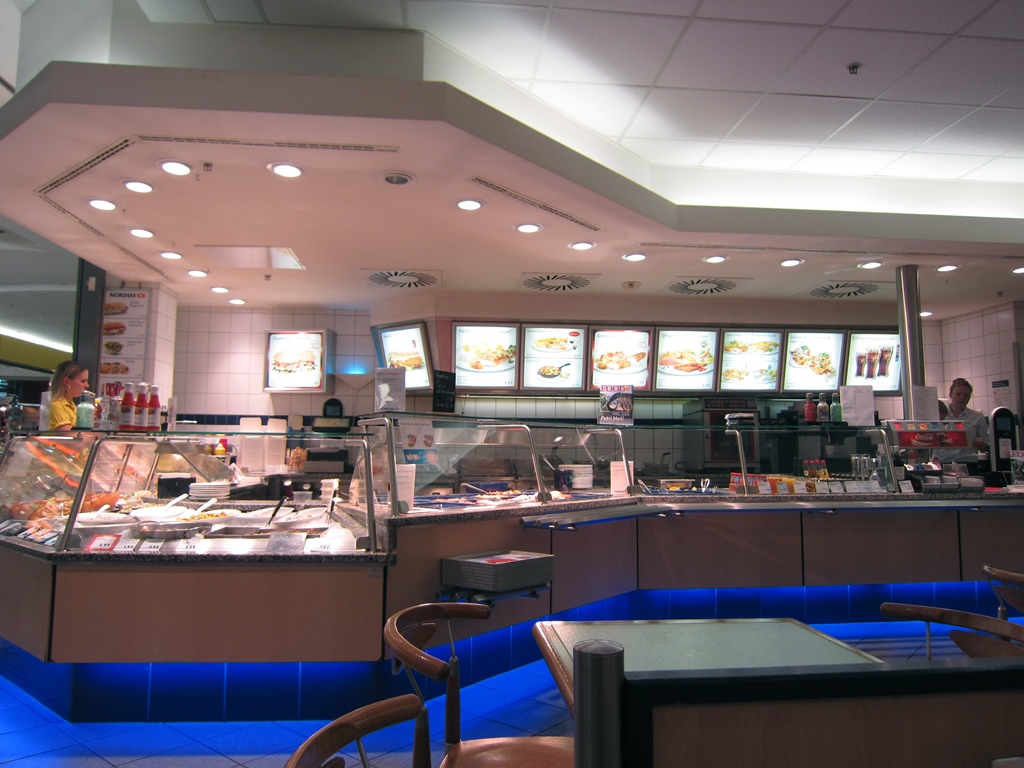
Nordsee
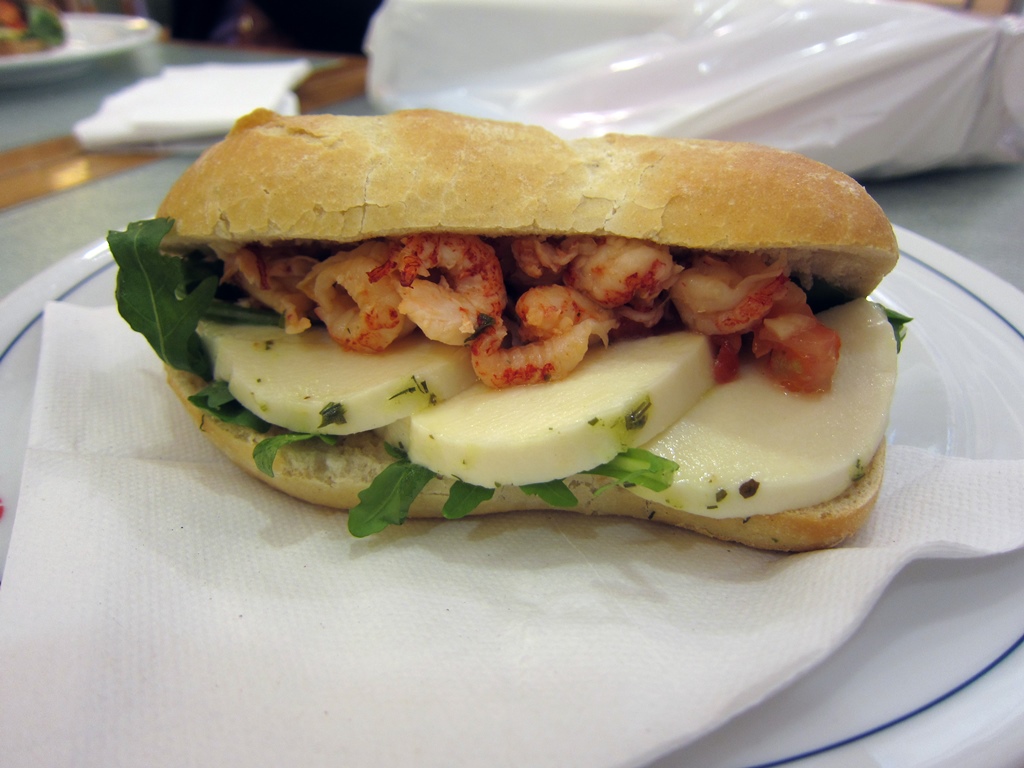
Sandwich with Cheese and Shrimps
The train took us back to Berlin, where we returned to our hotel and
started packing. Our time in Berlin was at an end, and early the
following day we would be catching a plane for our next destination,
Cologne.

